No idea wild guess Netra pro :Any idea what drones were used for the demo?
Latest Thread
You are using an out of date browser. It may not display this or other websites correctly.
You should upgrade or use an alternative browser.
You should upgrade or use an alternative browser.
For SWiFT UCAV new technologies developed by IITK.
I have third-party sources of great work going on the project SWiFT!
And it's going up well.
Pic:Representative
I have third-party sources of great work going on the project SWiFT!
And it's going up well.
Pic:Representative
More reliable source!!!!For SWiFT UCAV new technologies developed by IITK.
I have third-party sources of great work going on the project SWiFT!
And it's going up well.
Pic:Representative
Fluidic thrust vectoring for Ghatak drone:

 alphadefense.in
alphadefense.in
You may find this one quite interesting @anmdt @Cabatli_53 et al.

Ghatak UCAV and the fluidic thrust vectoring - Alpha Defense
Ghatak is an unmanned combat aerial vehicle developed by DRDO, IAF and IIT Kanpur. It used fluidic thrust vectoring. Read here...
 alphadefense.in
alphadefense.in
You may find this one quite interesting @anmdt @Cabatli_53 et al.
Nauman Ahmed Patel
Member
This thread is exclusively for India’s Maya UCAV and Eklavya Wingman being developed by India’s Kinetix Engineering Solutions Ltd. and UK’s Marques Aviation Ltd.
A) Kinetix-Marques Wingman
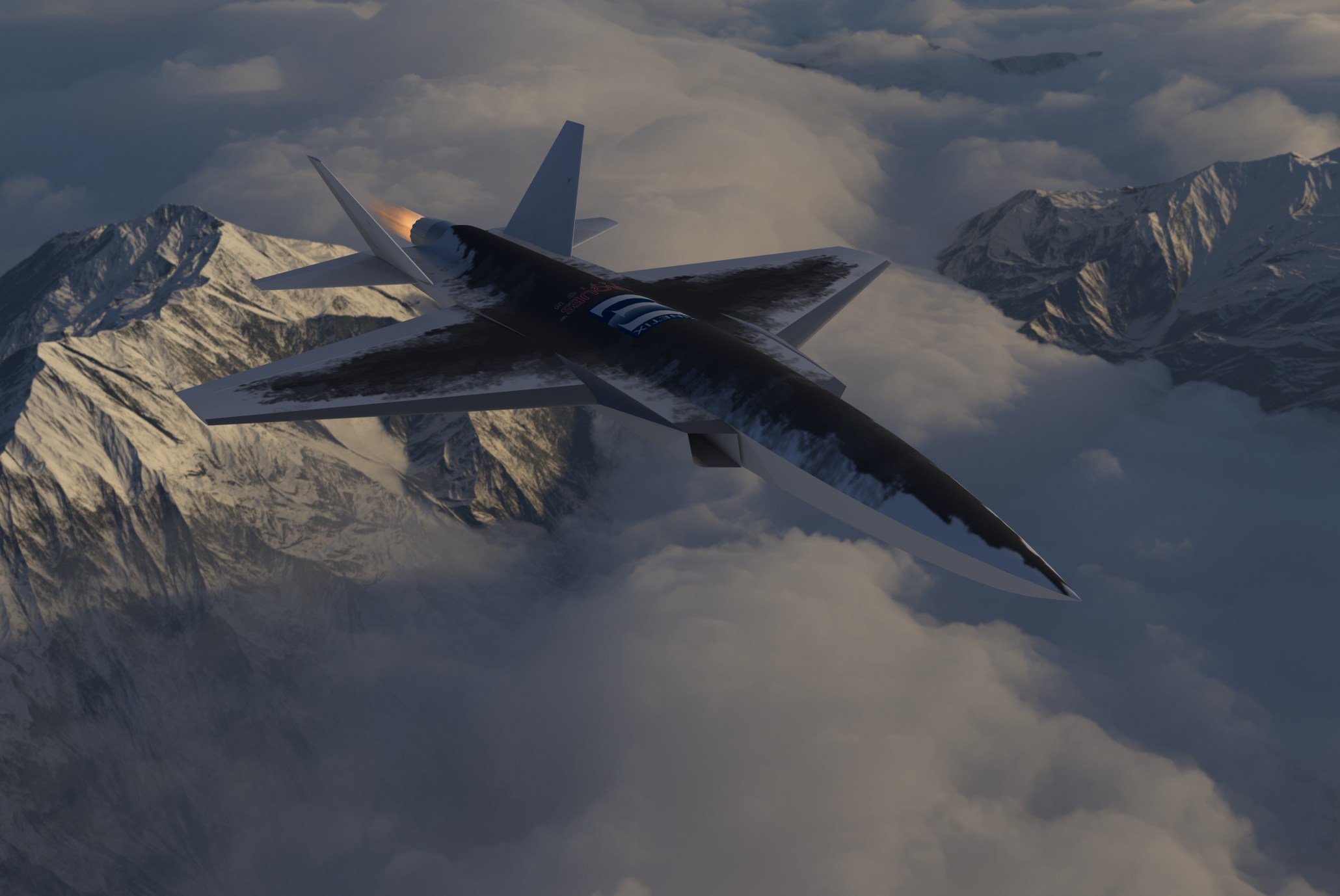
Features
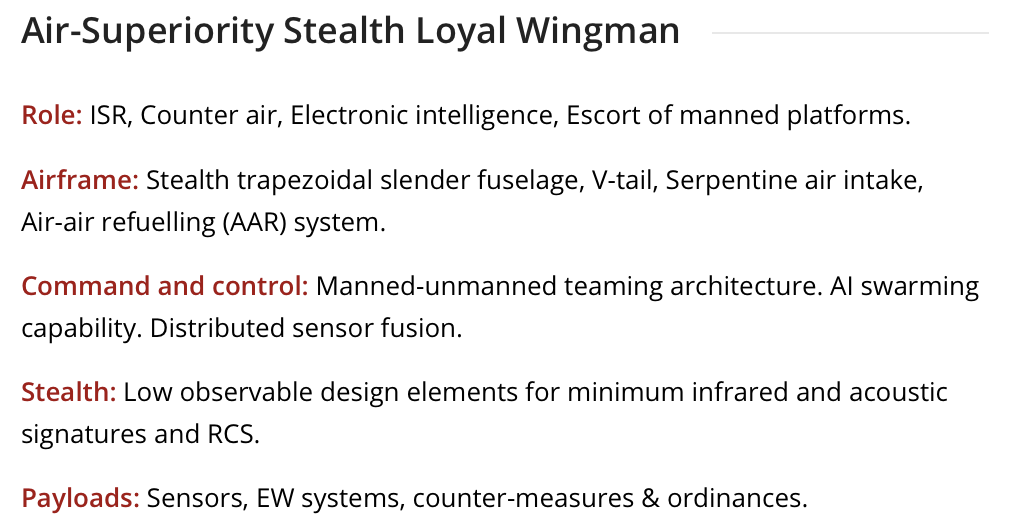
Specifications
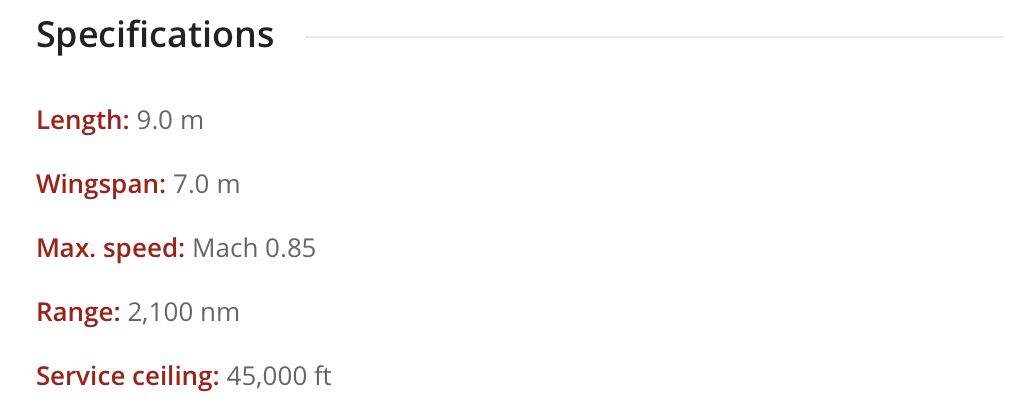
Design
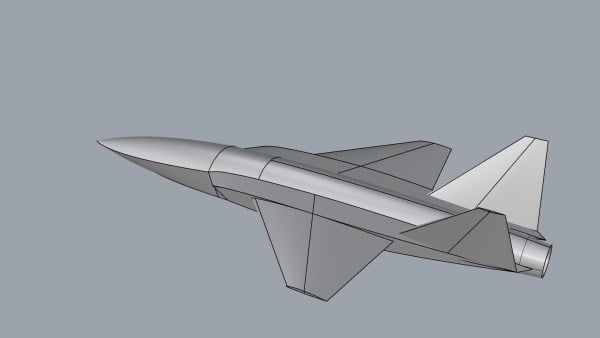
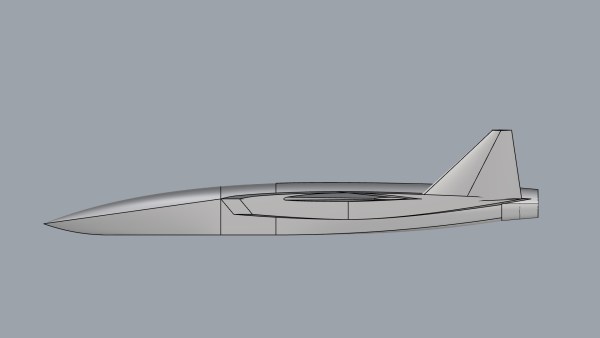

B) Kinetix-Marques Maya UCAV

Features
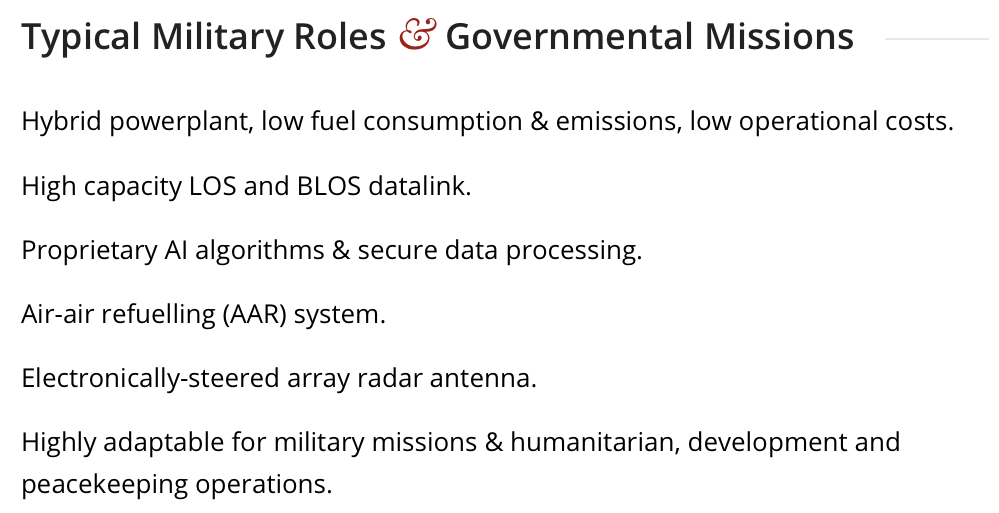
Specifications

Payload
EO, IR, Thermal, Sensors
Laser Range Finder
Communications Intelligence (COMINT)
Electronic Intelligence (ELINT)
Electronic Support Measures (ESM)
Synthetic Aperture Radar (SAR)
Maritime Patrol Radar (MPR)
Communications
Communication Repeater (RCR)
Line-of-Sight (LOS) Datalink
Satellite Communication (SATCOM)
Air Space Integration
Traffic Collision Avoidance System (TCAS)
Identification of Friend or Foe (IFF)
Countermeasures
Electronic Counter-Countermeasures (ECCM)
Radar Warning Receiver (RWR)

Note: All info and pictures belong to their respective owners.
Links to both Kinetix Engineering Solutions Ltd. and Marques Aviation Ltd.
A) Kinetix-Marques Wingman
Features
Specifications
Design
B) Kinetix-Marques Maya UCAV
Features
Specifications
Payload
EO, IR, Thermal, Sensors
Laser Range Finder
Communications Intelligence (COMINT)
Electronic Intelligence (ELINT)
Electronic Support Measures (ESM)
Synthetic Aperture Radar (SAR)
Maritime Patrol Radar (MPR)
Communications
Communication Repeater (RCR)
Line-of-Sight (LOS) Datalink
Satellite Communication (SATCOM)
Air Space Integration
Traffic Collision Avoidance System (TCAS)
Identification of Friend or Foe (IFF)
Countermeasures
Electronic Counter-Countermeasures (ECCM)
Radar Warning Receiver (RWR)
Note: All info and pictures belong to their respective owners.
Links to both Kinetix Engineering Solutions Ltd. and Marques Aviation Ltd.
—————————————————————————————————-
Yes I posted in the drone thread:

 defencehub.live
defencehub.live
Please post all updates here for time being and later it will be archived there.
Very pleasing to see private companies also start their developments/collab in the area.

UAV Programs
Indigenously developed landing gear systems for UAVs handed over to Navy by CVRDE Retractable landing gear systems for unmanned aerial vehicles, indigenously built by the Combat Vehicles Research and Development Establishment here, a unit of the DRDO, were handed over to the Navy on Sunday...
 defencehub.live
defencehub.live
Please post all updates here for time being and later it will be archived there.
Very pleasing to see private companies also start their developments/collab in the area.
Swarm UAVs would be researched and manufactured by private firm Newspace research and technologies headed by IAF veteran sameer joshi.drone swarms have been displayed during a recent event...unsure who the manufacturer of those.
this system would eventually turn onto swarm UAVs
video of the same drone :this system would eventually turn onto swarm UAVs
Old i think
Note, There is more on CATS discussion wise in the AeroIndia 2021 thread for interested readers:

All credit to original author of article, please visit their blog and related blogs for more of their content: http://fullafterburner.weebly.com/
======================================================================================
(Some pictures work only at original link)
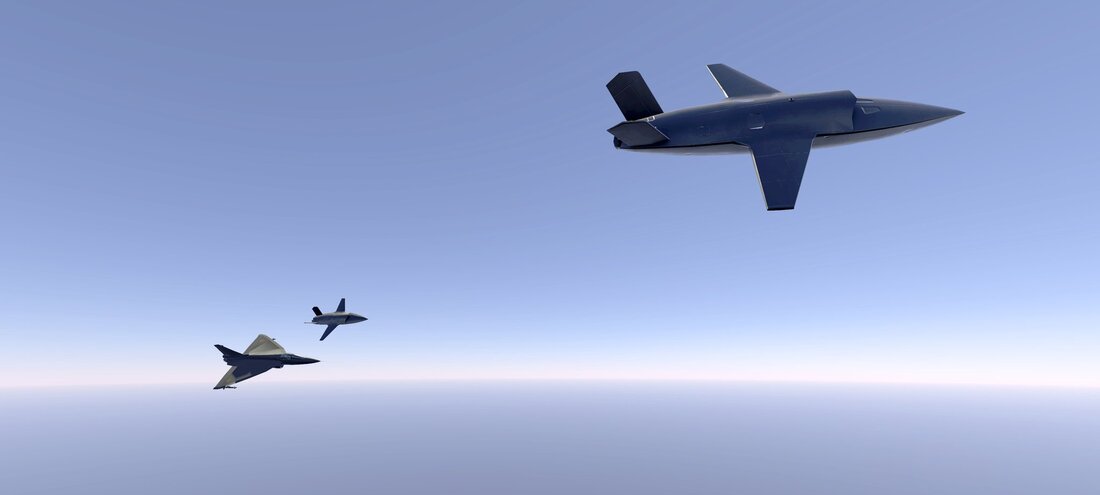
HAL Combat Air Teaming System
As the use of unmanned aircraft systems (UAS) in military operations has increased, so too have their capabilities. One recently developed capability is the ability to operate in conjunction with traditional manned aircraft through a process called manned-unmanned teaming (MUM-T), allowing manned aviators to benefit from the unique capabilities of UAS.
UAV's have been carrying out all the missions solo but with the development of Artificial Intelligence (AI), machine learning and deep learning they can carry out missions autonomously without any control from the ground. This gives them an opportunity to execute teaming. They can be small as they do not have a pilot inside. But when they are small the sensors are small and the range becomes smaller. Therefore, they need a manned aircraft to aid them in firing long range weapons. For the past one year the HAL has been working on how to develop teaming which is based on AI.
It is in this dimension where disproportionate gains are being achieved by the skillful amalgamation of the intelligence, grit, determination, tolerance for ambiguity, instant decision making capability and more of the combat pilot with the tremendous range, reach, endurance and the weapon carrying capability of the so called “dull, dirty and the dangerous” UAS. The rise of Integrated Air Defense Systems (IADS) is leading to more complex and challenging operational environments to the air forces. Teaming of manned combat aircraft with unmanned systems is one way of challenging advanced IADS like Chinese IADS, whilst bringing the additional benefit of reducing the risk to the pilots. So future is MUM-T
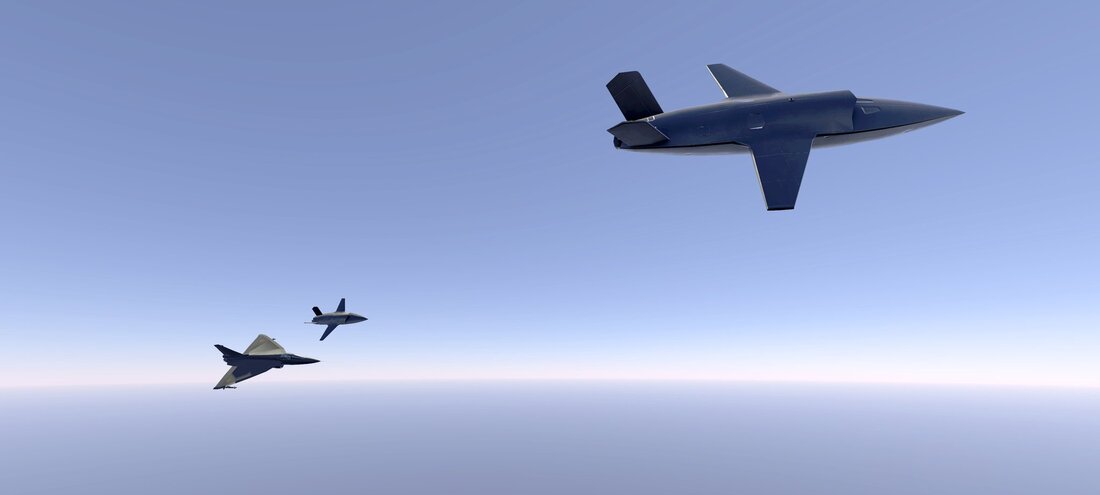
Combat Air Teaming System
Hindustan Aeronautics Limited (HAL) is developing a Manned-Unmanned System called Combat Air Teaming System (CATS), a deep penetration attack system that enables a fighter pilot to remain safely within the country’s borders, while being able to deploy UAS or swarms of drones deep into enemy territory to destroy targets.
HAL had quietly initiated the CATS project in 2017 and also tested the project in Pokhran in Rajasthan for the Indian Air Force, senior officers of which were said to be impressed by watching the tests. The preliminary design work has been completed. Work is now being done to define the requirements for a future cockpit for the type capable of handling the workload. As part of CATS, future variants of the Tejas Mk-1A will act as a ‘Mothership for Air teaming eXploitation’ (MAX) and will be modified with additional command and control interfaces for this purpose. The ‘mothership’ will take around 15 months to get ready to be made compatible with CATS. By 2024-25 HAL will be able to develop the CATS. HAL started detailed design work on the separate components that comprise the CATS system. The CATS project is part of a larger dream project by HAL to develop the advanced technologies of the future.
There are three reasons for developing CATS: India’s relatively limited military resources, the desire to create advanced future-class combat equipment and a tactical preference to use more unmanned assets for attacks on hostile areas. The central objective was to enhance teamwork.
CATS is a system of systems, it is an umbrella system which have a mother ship based on the LCA platform. The two-seater Tejas Mk1 Trainer as ‘Mothership for Air teaming eXploitation’ (MAX) will have a pilot in front and a weapon system operator in the rear. Weapon system operator of Tejas MAX will control the UAS/swarms drones associated with each LCA. The CATS will link a network of advanced autonomous drones to a fighter aircraft which will subsequently use the drones for air-to-air, air-to-sea and air-to-ground combat. Tejas MAX mother ship is currently using as a test-bed for testing new technologies developed as part of CATS.
A different system based on CATS technology for Jaguar aircraft known as Jaguar MAX customized for jaguar aircraft also under development. Currently The LCA Tejas or the Jaguar Darin III will be the choice as "mother ships”. The CATS concept can be transported into any other aircrafts of IAF including cargo and helicopters.
CATS comprises three components that can be separately or simultaneously deployed –CATS Warrior (Teaming drone), CATS Hunter (air-launched cruise missile) and Alpha-S (glider drone). All three are controlled by the pilot from the mothership via a secure data links, and equipped with electro-optical and infrared sensors. Much of the work is being done by HAL, which is also partnering with Indian start-ups to deliver the programme. Scale models are expected to begin testing in the near future. Since the Tejas lacks an operational datalink, HAL is looking to integrate an indigenous datalink that is being tested on the Hawk-I.
All the drones in the CATS family can work autonomously if the data link with GCS/mother ship lost. They have the intelligence where the other assets would be in the tactical scenario therefore they will do something sensible or execute the attack.
All the assets in the CATS family have conformal Omni-directional UHF antennas in the top and bottom of their airframe, using these data links they are connected with each other all the time. They would be in communication with each other and with mother ship. The mother ship will be in communication with other mother ships and with the air force data link to get the data from AWACS, these data passes down to the warriors in lead.
The primary user of the CATS family is IAF. HAL is also developing Army & navy variants. These variants will have different mission’s profiles and weapons package. Army & navy prefer smaller versions with Vertical Takeoff and Landing (VTOL) or any other kind of launching mechanism. Army/Navy versions will be lighter, it would have smaller engines. There would be a warrior 0.5, 0.33, 0.25 versions (size) HAL can develop these smaller versions in a matter of months; these smaller versions are already under building. The army variant will be controlled by Mobile ground controllers.
HAL is not only working with IAF but also with Army & Navy to make the system operational as early as possible. Project management teams from, Air force, Army, Navy & HAL is working together to make It reality and HAL has enough money to complete the project.
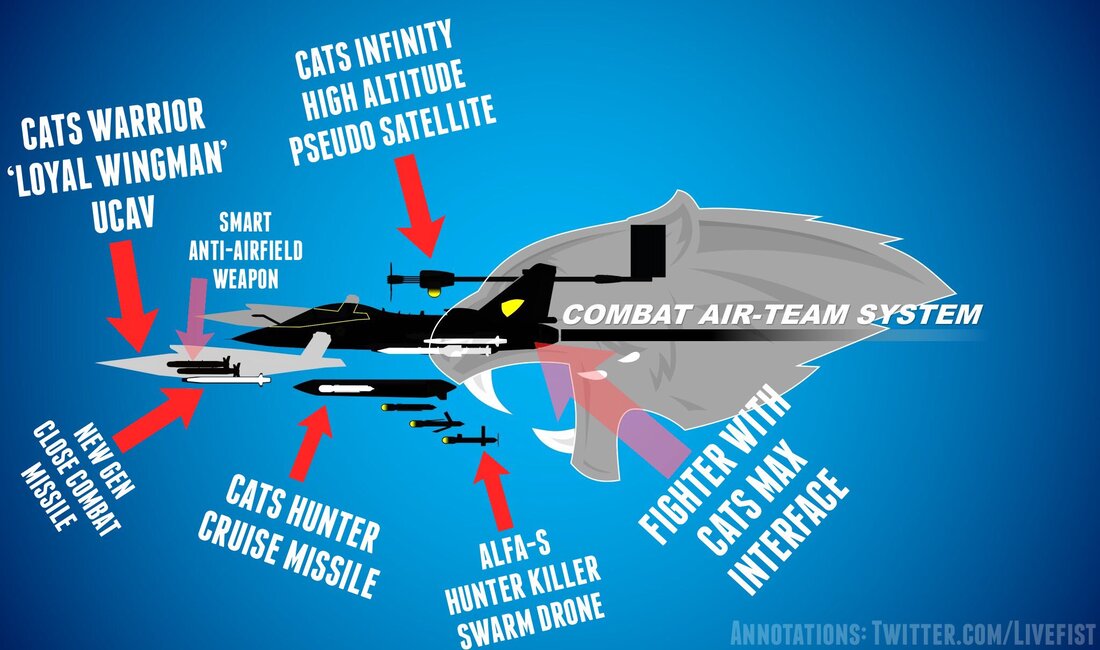
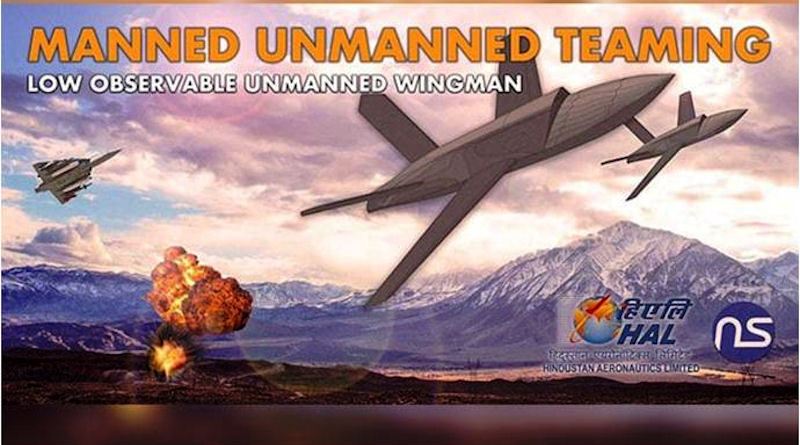
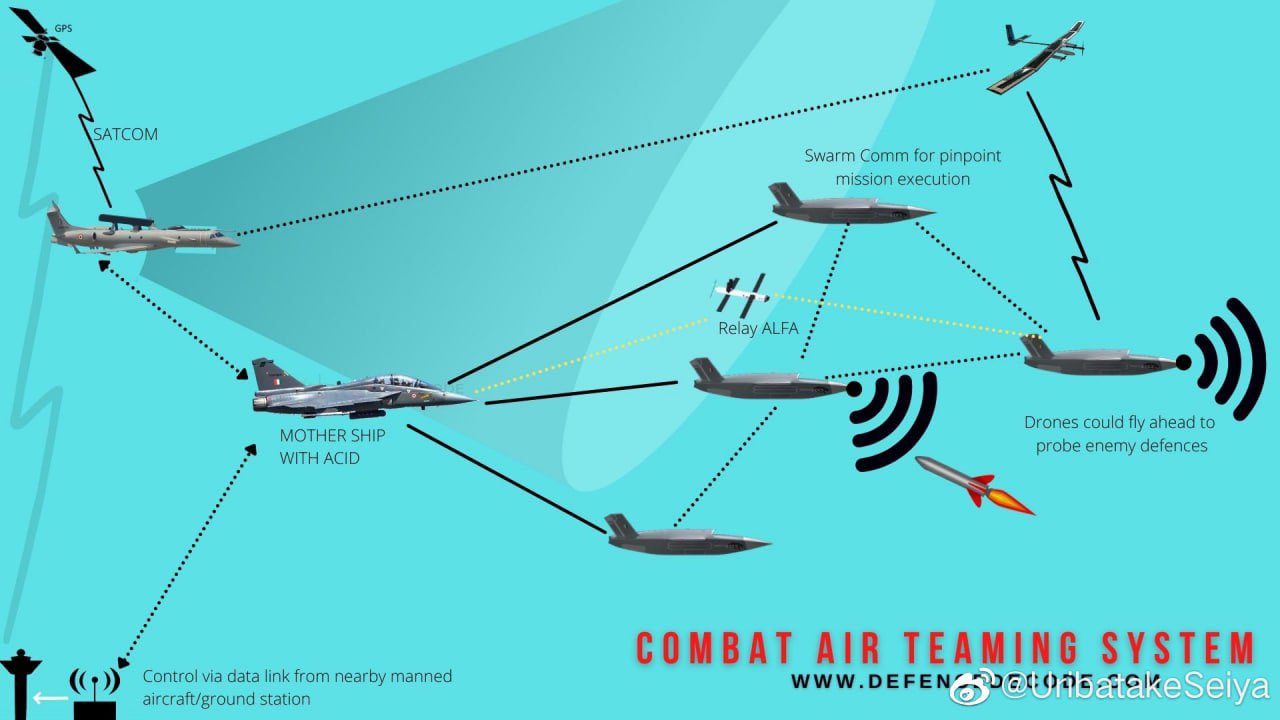
CATS Warrior (Loyal Wingman)
CATS Warrior is an autonomous unmanned aerial vehicle (UAV) which is intended to operate alongside/ahead of the LCA mother ship as a loyal wingman. CATS Warrior is the first loyal wingman showcased, at least in mockup form, with air-to-air missiles. Warrior can take off and land autonomously. The Warrior is primarily envisioned for Indian Air Force use and a similar, smaller, version will be designed for the Indian Navy. It could be used both as a forward-deployed scout for regular aircraft as well as for directly engaging enemy targets.
CATS Warrior can take off on its own from the ground and target enemy locations. The Warrior is being armed with air-to-air and air-to-ground missiles, which would be used to hit targets on the ground or in the air. CATS Warrior has a combat radius of 350km, after completing the mission CATS Warrior will return to base. If required, the CATS Warrior can sacrifice itself to crashing into the target in long-range combat missions; it can go up to 700km and hit a target like a kamikaze drone.
Multiple Warriors will be commanded by a single Tejas. Currently Tejas mothership can control maximum four warrior loyal wingman drones. The idea is to maximize the effectiveness of every mission while reducing the potential of losing the lives of precious pilots since they would be accompanied by the drones which would protect them.
The Warrior, is designed as a stealth platform, being small It has inherently less surface area, the airframe is built using composite radar absorbent structures allows the UAV to operate in stealth mode. Warrior airframe is shaped for stealth, nose cone, serpentine air intake on top of the airframe; weapon bays, conformal data link antennas etc are some of the stealth features. Weapons bay doors, radome etc are zigzagged to scatter the radar waves away from the radar source. Exhaust nozzle is specifically designed for defeat high frequency radars which target the drones from behind. The corrugated nozzle of warrior also helps to reduce the IR signature. These stealth features would allow it to evade being picked up by radar, which makes its detection challenging for contemporary systems.
The Warrior is equipped with an electro-optic/infrared (EO/IR) payload, active electronically scanned array (AESA) radar, inertial navigational unit, and electronic warfare suite for intelligence, surveillance, and reconnaissance (ISR) and combat operations. Warrior will serve as a ‘sensor amplifier’ for the LCA, flying out ahead of the manned aircraft and using its sensors to feed information back to LCA. All the electronics and other sensors/equipments will acquire from various DRDO/HAL labs. Sources of electronics are already identified these systems are already in use with various aircrafts.
CATS Warrior provided with two internal side weapons bay each can carry one Smart Anti-Airfield Weapon (SAAW) precision-guided weapon as its payload. Current version of CATS Warrior can carry two ASRAAM (NGCCM) close combat missile externally, future variants will be able to carry long range beyond visual range air to air missiles. The Warrior can also carry and release the Alpha-S, swarming drone. Each warrior can carry up to 6 Alpha-S each carrying about 5-8kg of explosives, and can target multiple enemy locations simultaneously on being released. Warrior can also carry fuel tanks external. Weapon and fuel payload is mission adaptable.
The CATS Warrior is powered by modified PTAE-7 engine. Upgraded PTAE-7 engine is fitted with FADEC, better compressor, better turbine blades, longer life, better methods of maintenance and got a wider bandwidth of operation. Currently warrior is not fitted with afterburner but HAL is already tested PTAE-7 engine with afterburner module. Adding jet pipe for afterburner increases the overall weight of the drone. For the future variants HAL may use under development HTFE-25 engine.
Other similar loyal wingman drones are supposed to be modular, their components, such as detection or payload delivery systems, being mission-adaptable. The modularity of the CATS Warrior was not mentioned by HAL, and the existence of the multi-purpose Hunter is partially compensating for its lack.
CATS Warrior drone system should be ready for first flight by 2024-25 and the mothership integration a year or two latter.
Specifications

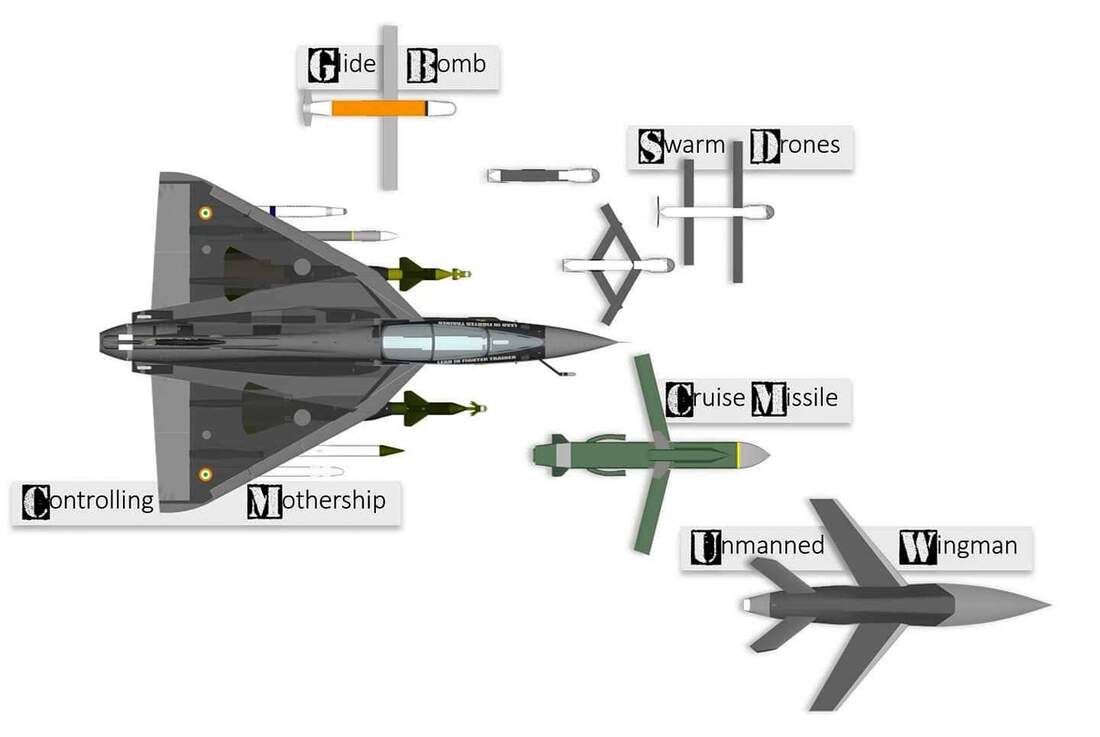
CATS Hunter (Recoverable Cruise Missile)
The CATS Hunter is being conceived as an air-launched recoverable and reusable low-observable, AI powered cruise missile. CATS Hunter has the capability of deep penetration strikes. Hunter probably be the first multi-purpose weapons carriage system in the world.
CATS Hunter can carry 250 kg different types of warhead in its internal bomb bay. It will have a range of 200-300 kilometers in one way. In non recoverable missions the missile acts as an Air-launched cruise missile with a range of 500-600km (need confirmation).
Hunter will be equipped with a new generation navigation system, Global Positioning System, Terrain Relative Navigation, Image-Based Navigation, Automatic Target Acquisition, and will be equipped with an Imaging Infrared Seeker/ RF seeker. Hunter will use single up-rated PTAE-7 engine.
CATS Hunter will have 600+ kg weights. It will be powered by an upgraded PTAE-7 turbojet engine. CATS Hunter could be integrated with Tejas Mk1A, Mirage-2000, and Su-30MKI fighter fleet initially and later on LCA Mk2, TEDBF and AMCA.
Once the mothership reaches a battle area the CATS Hunter will be released from the aircraft and can do air to ground and air to sea attacks. After finishing the mission the pilot can command the hunter to go back to the base in some cases pilot can command to do a suicidal attack on the target. Hunter can also autonomously come back to the base. To aid the landing hunter has two parachutes. When the hunter reaches near the base after completing the mission one parachute which is fitted between air intakes opens and the hunter descend towards the landing point, just before impacting another parachute opens and with a slow rate of descend it touches the ground, the ground crew can collect the system. Once recovered Hunter can be refueled and rearmed for another mission in a short time period. It can reprogram with fresh sets of data such as satellite images, co-ordinates etc of its new target. With such a capability hunter can work even in intense electronic warfare/ jamming environment without requiring mid-flight updates. CATS Hunter also can work autonomously without the aid of mother ship. If CATS Hunter failed to find its target it will find another target from its threat library or abort the attack and come back to the base.
CATS Hunter can also do Intelligence Surveillance and Reconnaissance (ISR) missions, Electronic Warfare missions etc. For ISR mission’s hunter will use surveillance sensors, jamming sensors. During ISR missions its bomb payload is supplanted by fuel it can stay airborne for a long time to carry out jamming, reconnaissance and post-action filming of strike zones .After the mission (any mission) it come back to the base and the data available can extract for evaluation & for future use. During the mission using data links hunter can communicate with Ground Control Stations and can pass data real time. One Tejas can carry maximum 5 hunters.
Specifications
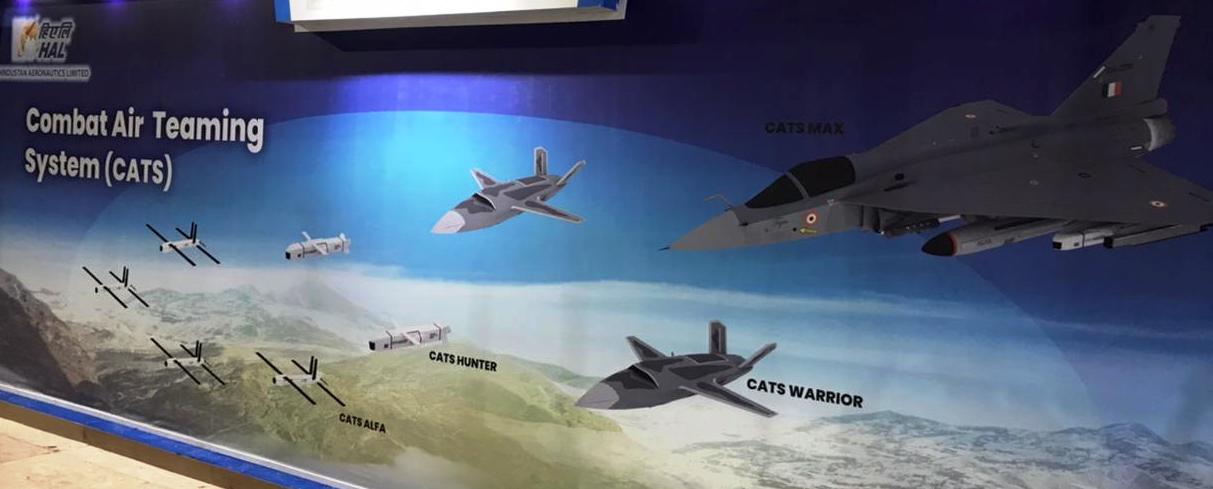
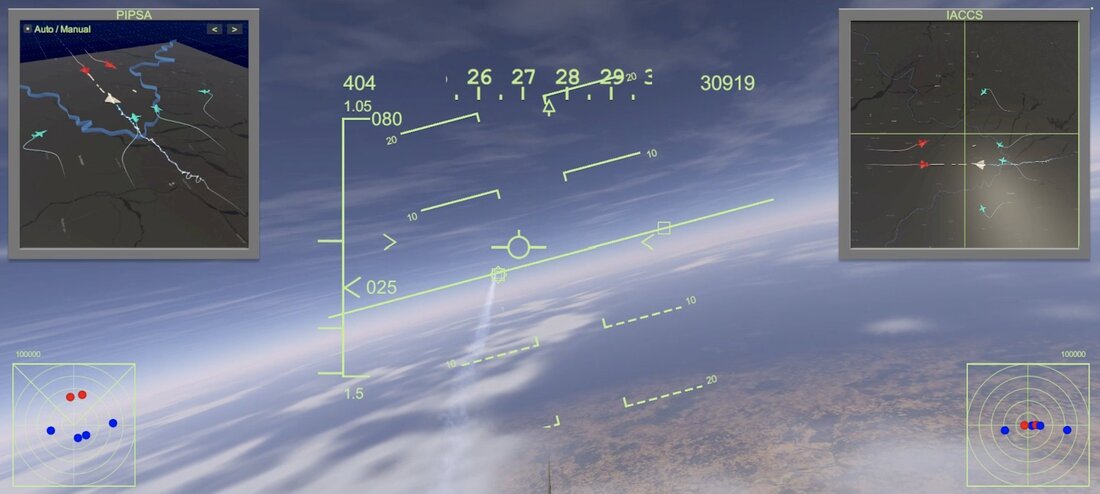
CATS ALFA (Air Launch Flexible Asset)
CATS ALFA is a carrier for ALFA-S Swarming drones. The ALFA-S drones are packed inside CATS ALFA carrier. This is a glide pod, LCA can carry maximum 5 CATS ALFA glide pod. The first ALFA-S drone prototypes are likely to be deployed from Hawk Advanced Jet Trainers.
In a mission CATS ALFA carrier drops from the aircraft and can glide 50 to 100 kilometers (need confirmation) into the enemy territory and once it reaches the mission zone, The glide pod opens up by command from pilot/ autonomously and swarm drones comes out and do the mission . The same drone can execute multiple missions or different drones can be designed for different missions. Each CATS ALPHA pod can carry 4 ALFA-S swarming drone in a foldable wing configuration. ALFA-S swarming drones have two folding wings and are between 1 and 2 meters long. After detaching from the carrier pod ALFA-S can further glide into 100-150km, total range of CATS ALPHA / ALFA-S combination is somewhere 150-250 Km depends on the altitude of mother ship and other environmental conditions.
Each Alpha-S weighs around 25 kg and can carry a payload of 5-8 kgs. A single Alpha-S can target several enemy locations through artificial intelligence and machine-learning technology which allows the ALFA-S to discriminate between possible targets. When deployed, the drones fly in formation at speeds of 100 kmph.
The drones in the swarm of Alpha-S are networked via electronic data links, and equipped with electro-optical and infrared sensors. Using their infrared and electro-optical sensors; they detect targets such as surface-to-air missile units, enemy radars and aircraft on the ground. Each drone is designed to be smart enough to 'learn' about what it detects before targets are assigned to individual drones. Each drone then carries out a suicide attack - hitting the target using the high-explosive warhead carried onboard.
Each swarm could have dozens of individual drones. If detected, some of the drones would be shot down, but the sheer numbers of the swarm would overwhelm enemy defenses and ensure a high probability of mission success. According o brochures ALFA-S can be used for ISR missions fitted with EO/IR and ELINT sensors.
Specifications
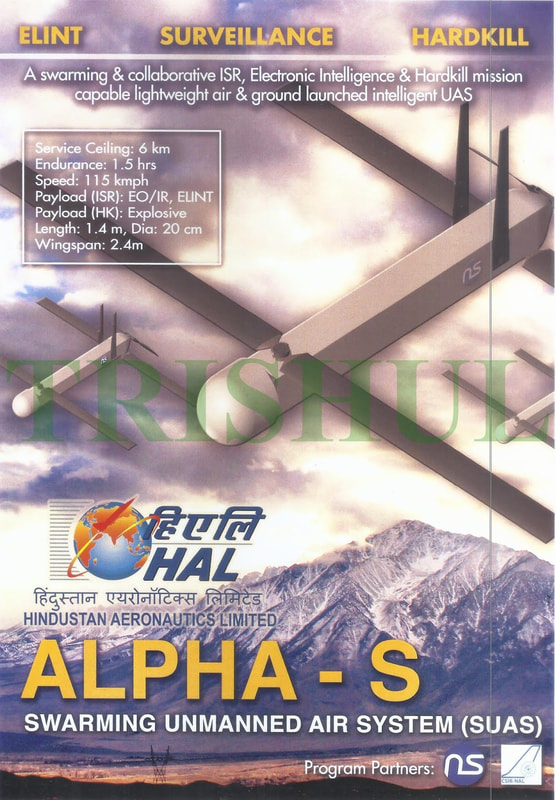
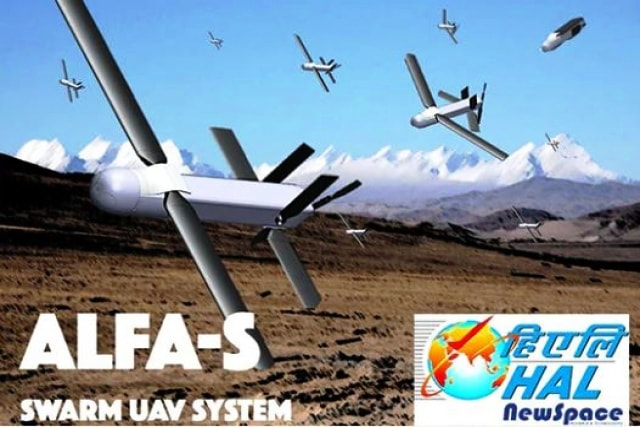
CATS Infinity
As part of CATS, HAL is also developing a high-altitude pseudo satellite system CATS Infinity that can fly at about 70,000ft continuously for 2-3 months, to maintain surveillance on the ground below. This is a futuristic concept which no other country has yet developed. It will be a solar powered system. HAL is developing this jointly with a startup.
CATS Infinity will act as a data link relay station between various assets of the CATS family. It will be equipped with advanced sensors such as synthetic aperture radar and other surveillance equipment's.
CATS Infinity can cover larger areas with less interference. They could also help ease data transfer when used as an intermediate conduit between a satellite and UAVs. Infinity would help to coordinate attack missions of CATS, and also helps in providing Battle Damage Assessment (BDA) via live video feeds and images to determine if the mission was successful and to plan the next course of action.
All research and development of the aircraft was done in-house, which is being validated by aerospace major Boeing. The first flight of High Altitude Pseudo Satellite was scheduled for 2019 but delayed.
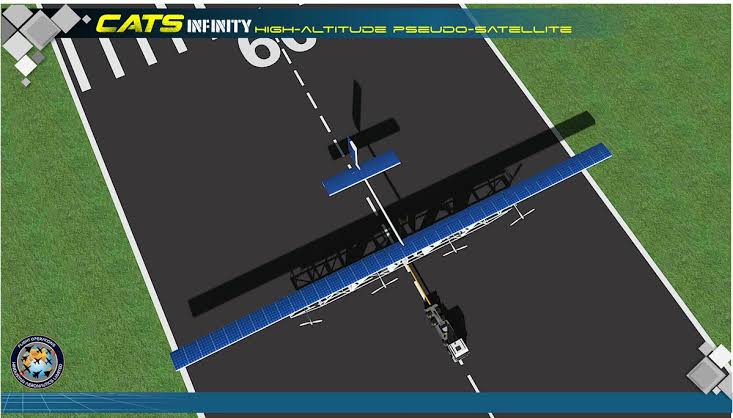
ACID (Air Combat Intelligence Development)
To support the Manned and UnManned Teaming operations (MUM-T), an advance artificial intelligence (AI) based combat algorithm is being developed under a program called Air Combat Intelligence Development (ACID). Developed by The IAF and Bengaluru-based start- up New Space Research & Tech ACID utilizes deep reinforcement learning (DRL) to increase the efficiency of the algorithm based manned unmanned teaming implementation towards future ops.

Jaguar max
The glimpses of HALs manned unmanned team system was first broke cover in aero India 2019 as Jaguar max. CATS Hunter, a SCALP-like cruise missile, as is the CATS ALFA-S switchblade swarm drone was displayed at Aero India 2019 as a teaming system with a Jaguar weapons upgrade package by HAL. HAL displayed new avionics, a cockpit, and a model of the heavily armed upgraded Jaguar ground-attack aircraft.
The Jaguar MAX primarily features an EL/M-2052 active electronically scanned array (AESA) radar from Elta, an AESA-based wide-band jammer, a combined interrogator transponder, a flight management system, a configurable cockpit with a larger area display, a voice command system, a helmet-mounted display, an L-band datalink for long-range missions, a GAGAN/GPS/GLONASS-aided INS (with IRNSS optional), a software defined V/UHF radio, and modernized engines (optional).
The aircraft can be configured with a Radar Targeting Pod (2 seat-variant)/Laser Pod/Synthetic Aperture Radar (SAR) Pod/Electro-Optical (EO) Pod to meet various mission requirements.
The Jaguar MAX is envisioned to carry and launch various next-generation air-launched weapons, including a gliding heavy-weight new-generation precision-guided monition; five sensor-based, multi-warhead, anti-tank smart bombs; a new-generation laser-guided bomb; 16 gliding, lightweight smart anti-airfield weapons; a sea skimming anti-ship missile; two new-generation short-range air-to-air missiles; four next-generation beyond visual-range air-to-air missiles; five advanced medium-range cruise missiles; and 12 swarming unmanned air vehicles.
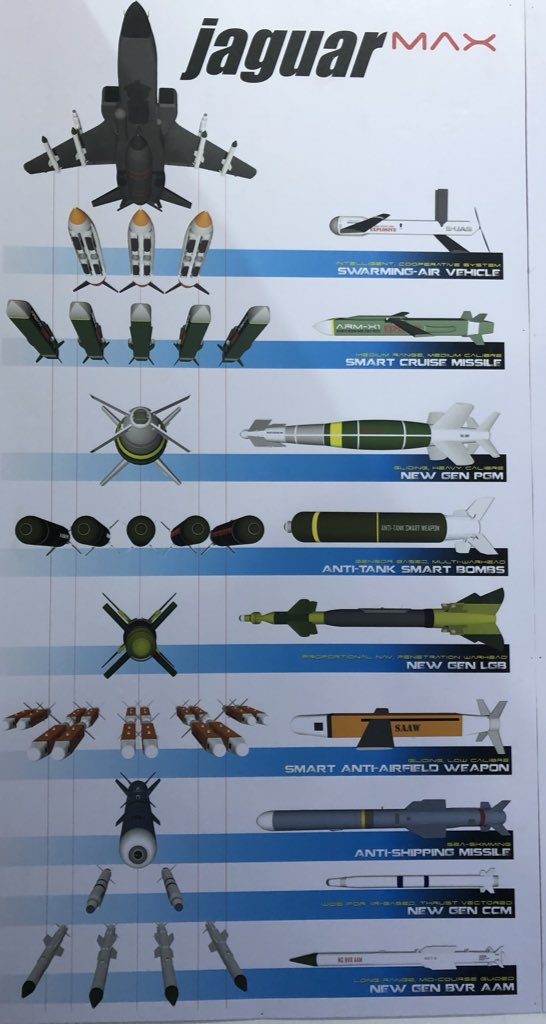
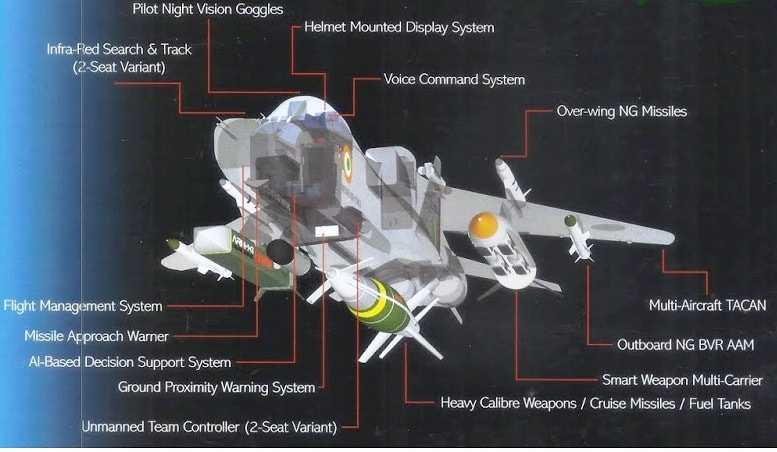
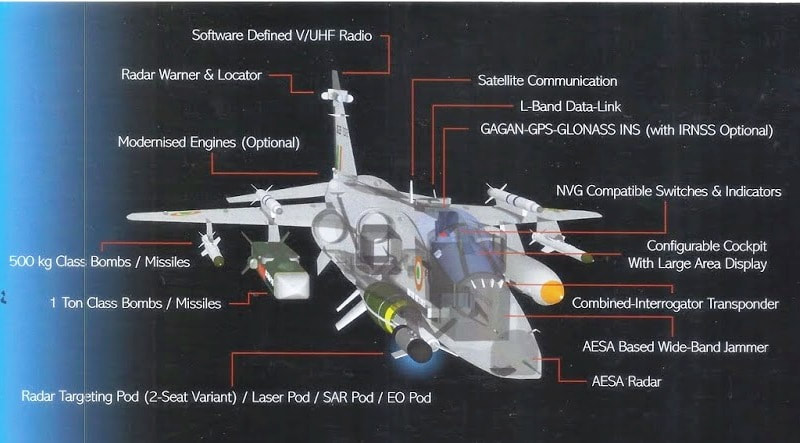
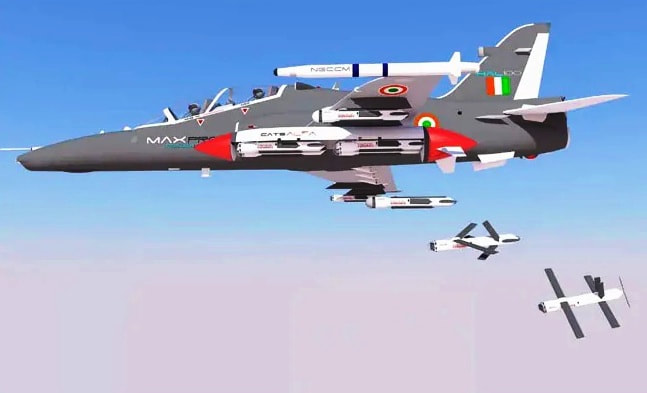
CATS ALFA carrier prototypes are likely to be deployed from Hawk Advanced Jet Trainers
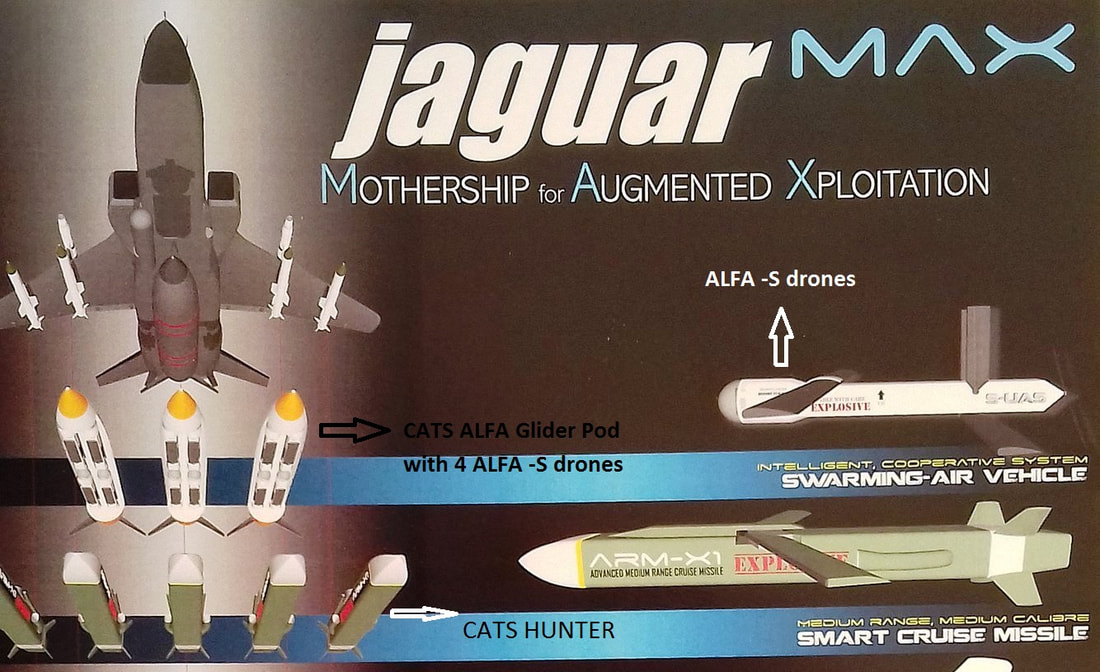

Proposed cockpit of jaguar MAX
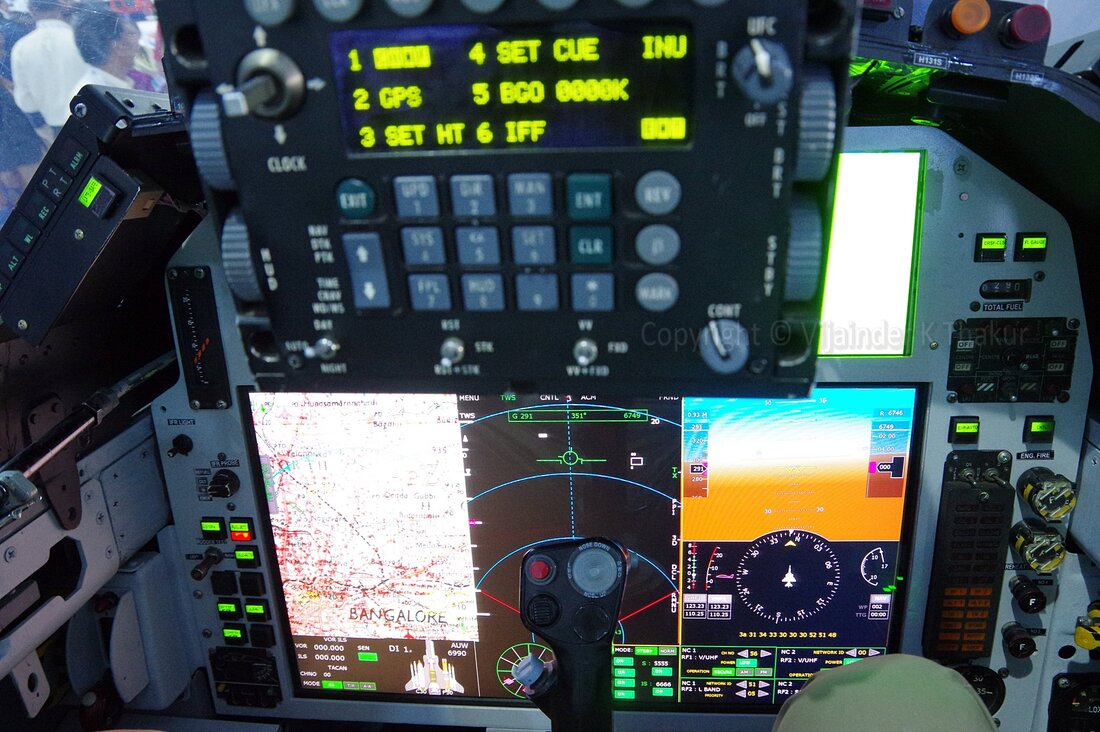
Proposed cockpit of jaguar MAX
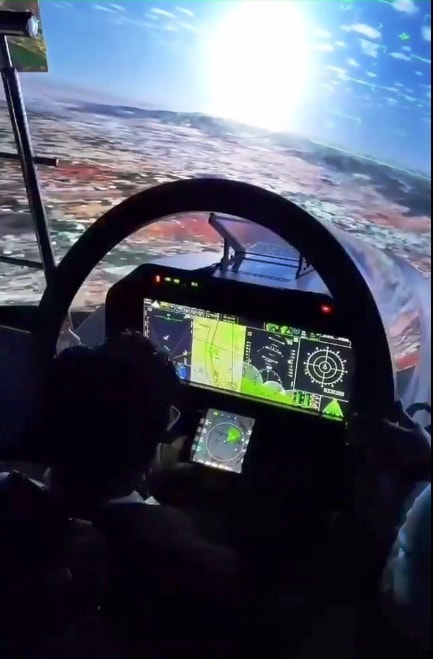
Front cockpit of Tejas MAX
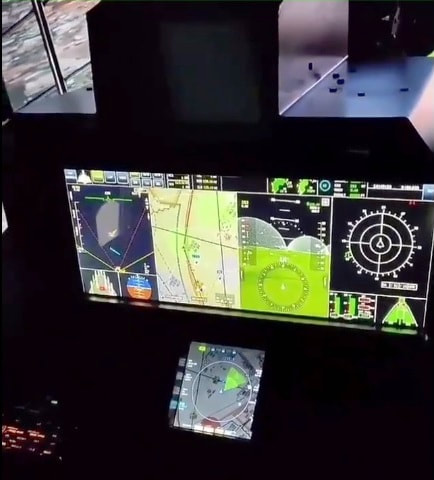
Rear (WSO) cockpit of Tejas MAX
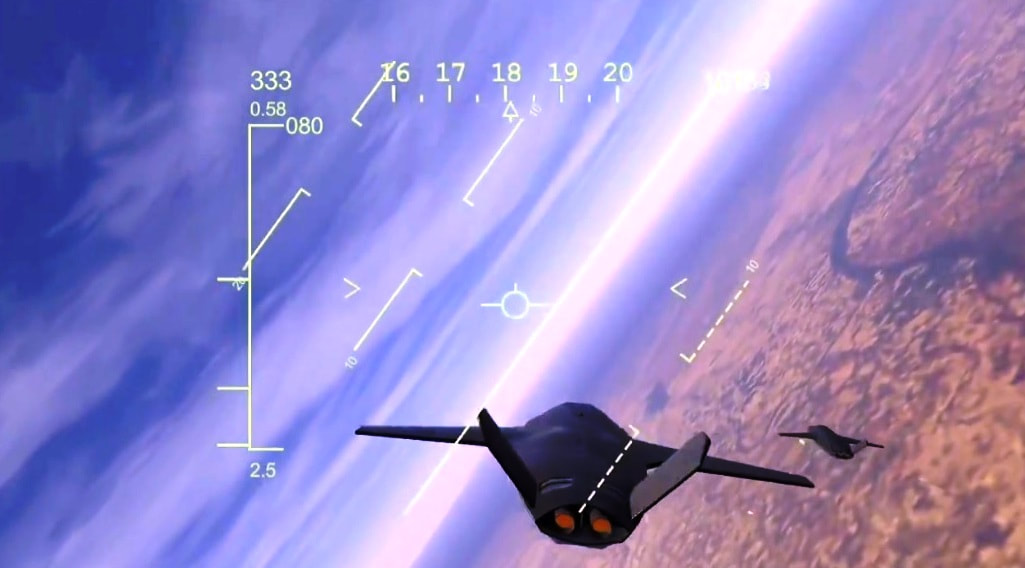
CATS Warrior
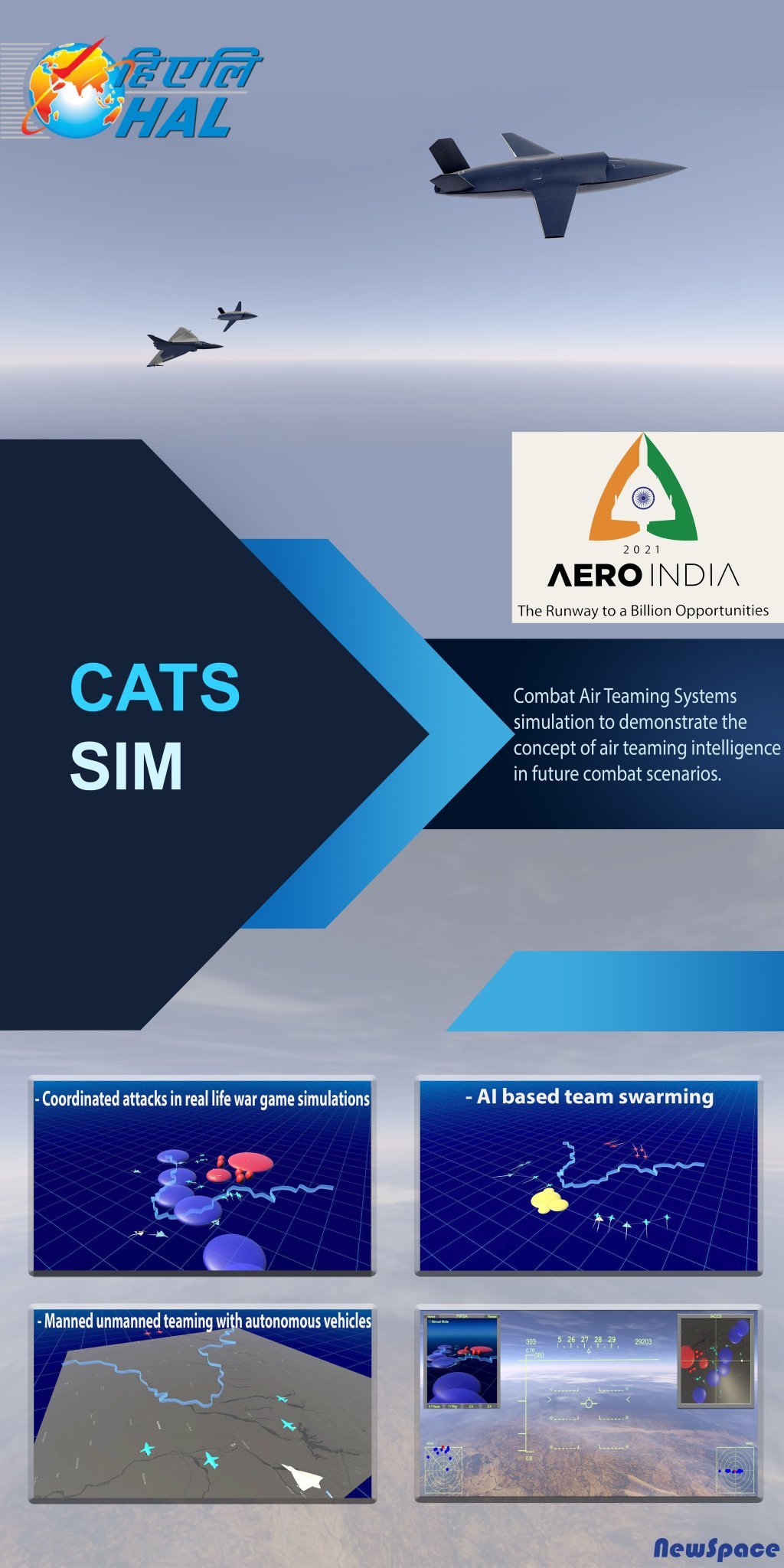
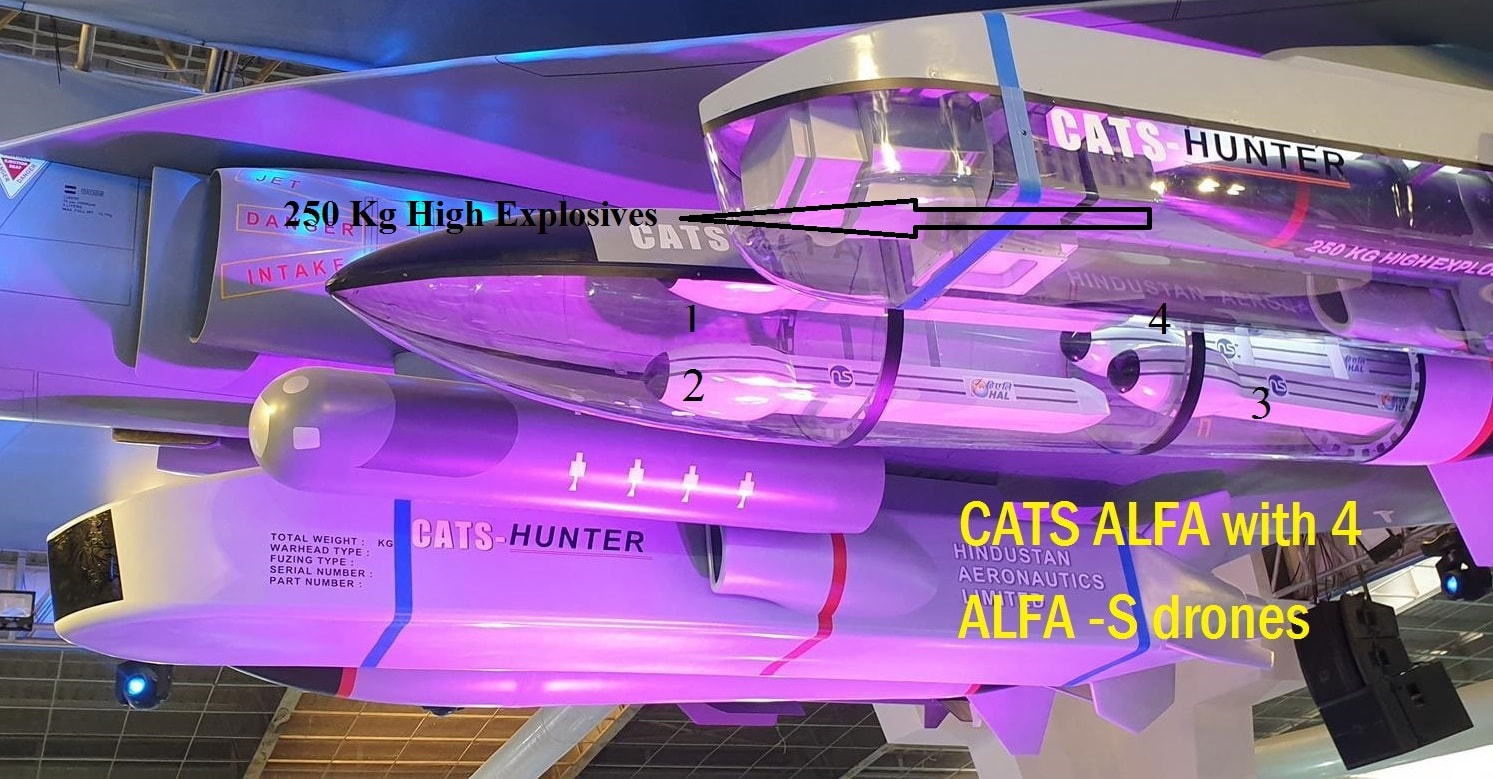
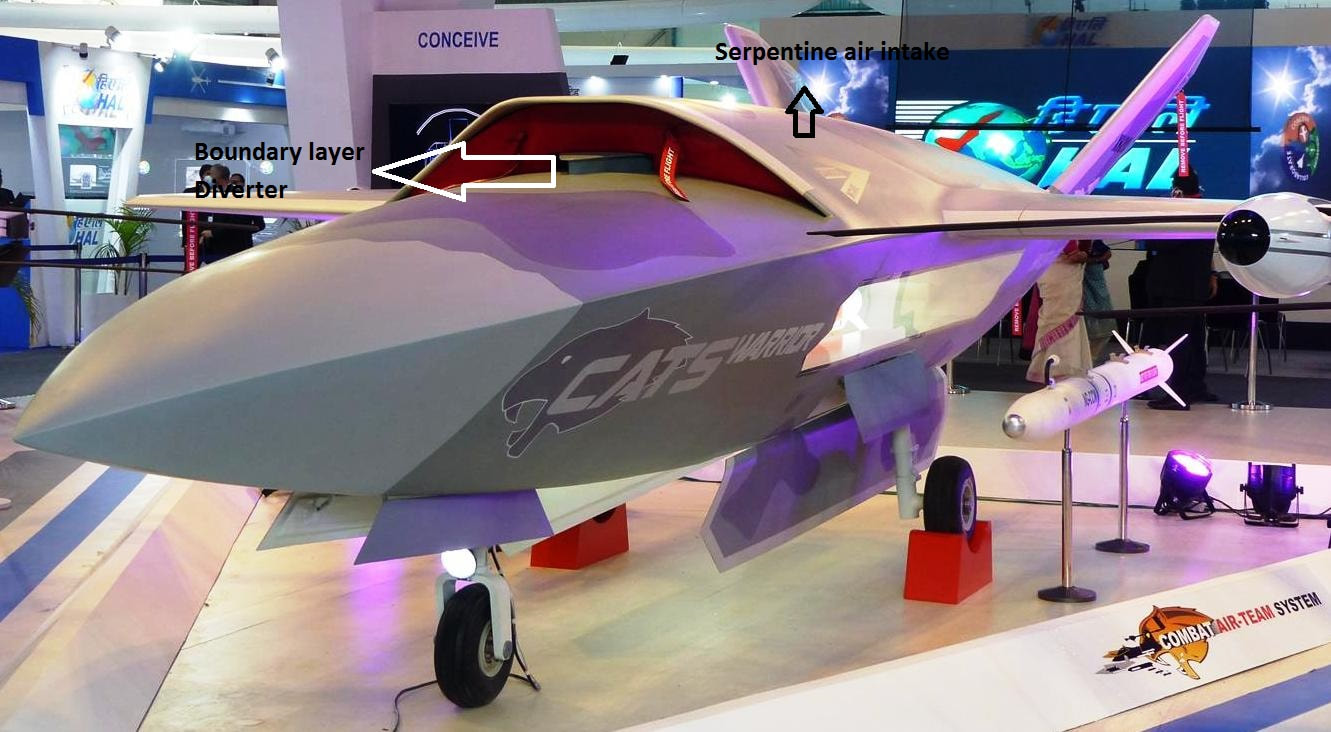
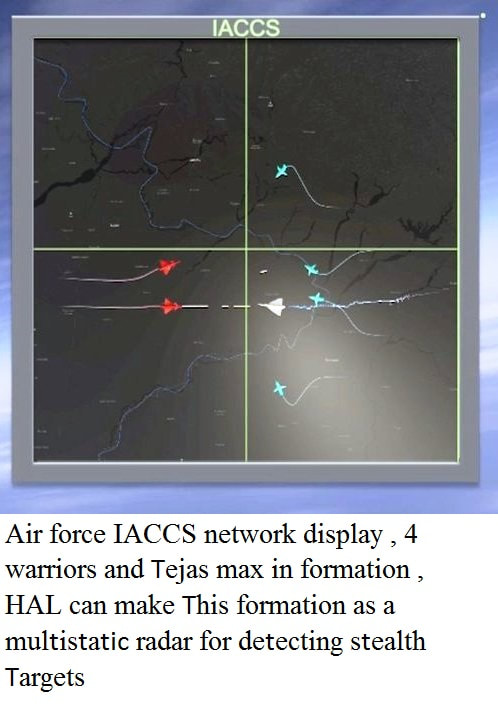

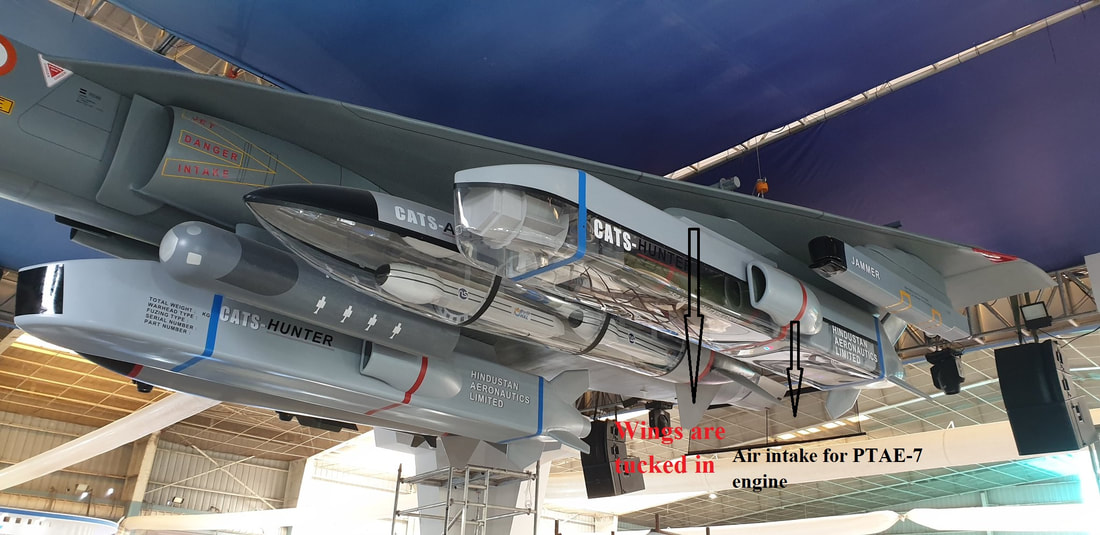
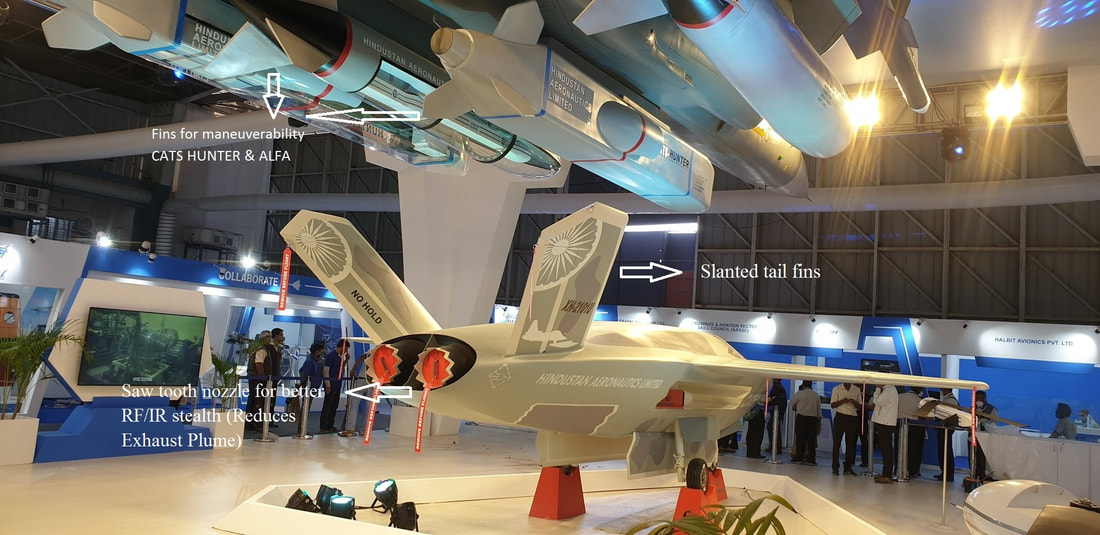
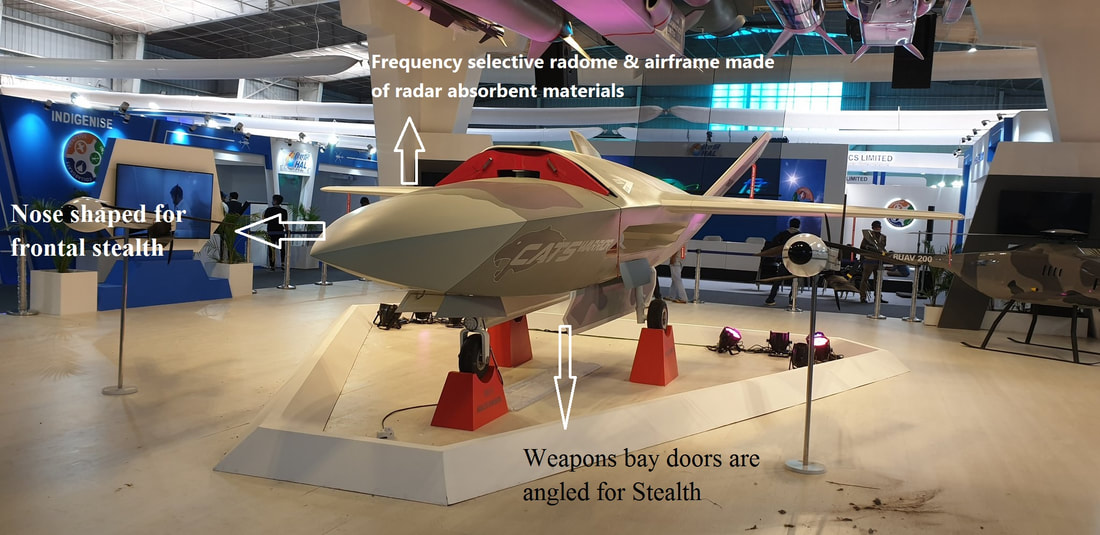

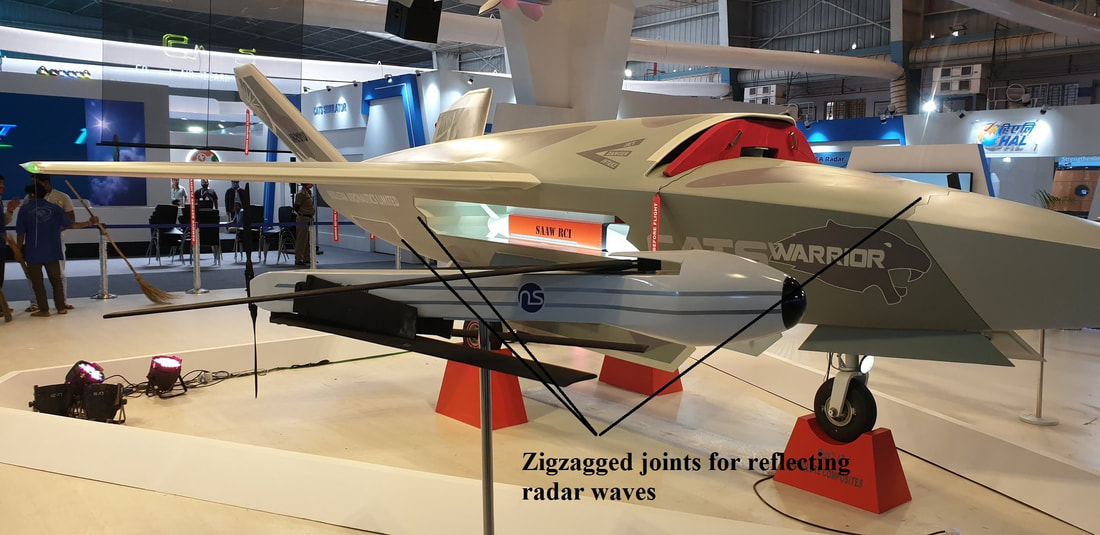
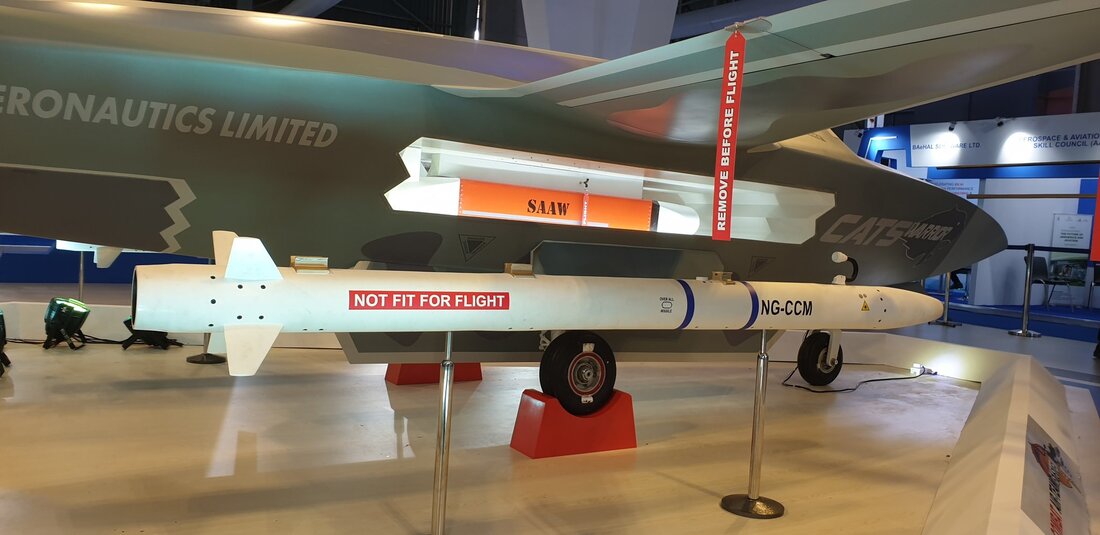
NGCCM/ASRAAM & SAAW
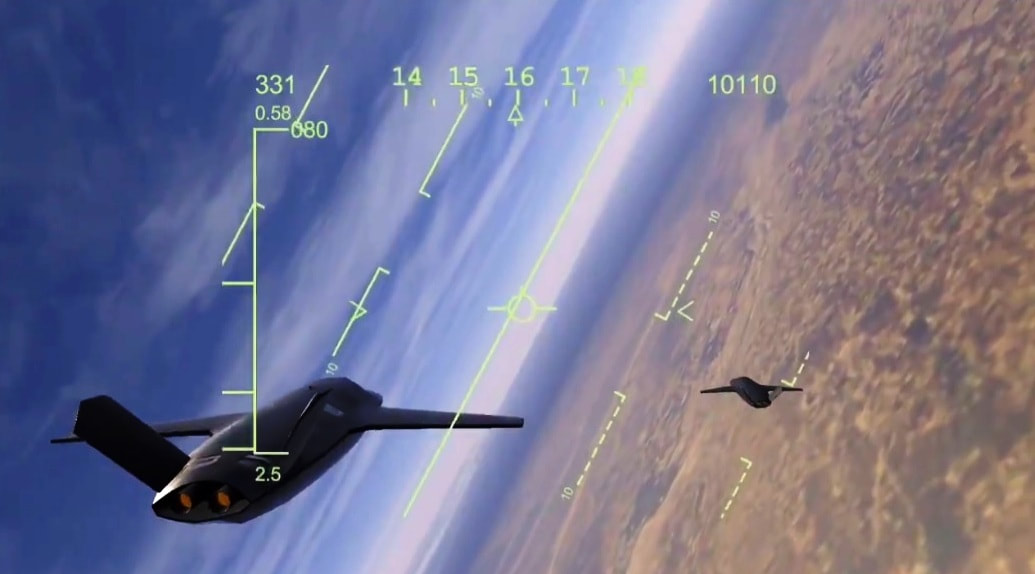
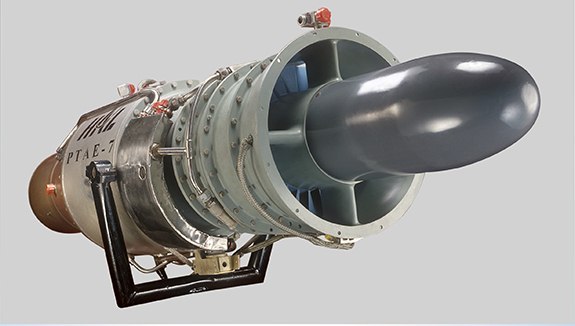
PTAE-7 Engine

All credit to original author of article, please visit their blog and related blogs for more of their content: http://fullafterburner.weebly.com/
======================================================================================
(Some pictures work only at original link)

HAL Combat Air Teaming System
As the use of unmanned aircraft systems (UAS) in military operations has increased, so too have their capabilities. One recently developed capability is the ability to operate in conjunction with...
fullafterburner.weebly.com
HAL Combat Air Teaming System
As the use of unmanned aircraft systems (UAS) in military operations has increased, so too have their capabilities. One recently developed capability is the ability to operate in conjunction with traditional manned aircraft through a process called manned-unmanned teaming (MUM-T), allowing manned aviators to benefit from the unique capabilities of UAS.
UAV's have been carrying out all the missions solo but with the development of Artificial Intelligence (AI), machine learning and deep learning they can carry out missions autonomously without any control from the ground. This gives them an opportunity to execute teaming. They can be small as they do not have a pilot inside. But when they are small the sensors are small and the range becomes smaller. Therefore, they need a manned aircraft to aid them in firing long range weapons. For the past one year the HAL has been working on how to develop teaming which is based on AI.
It is in this dimension where disproportionate gains are being achieved by the skillful amalgamation of the intelligence, grit, determination, tolerance for ambiguity, instant decision making capability and more of the combat pilot with the tremendous range, reach, endurance and the weapon carrying capability of the so called “dull, dirty and the dangerous” UAS. The rise of Integrated Air Defense Systems (IADS) is leading to more complex and challenging operational environments to the air forces. Teaming of manned combat aircraft with unmanned systems is one way of challenging advanced IADS like Chinese IADS, whilst bringing the additional benefit of reducing the risk to the pilots. So future is MUM-T

Combat Air Teaming System
Hindustan Aeronautics Limited (HAL) is developing a Manned-Unmanned System called Combat Air Teaming System (CATS), a deep penetration attack system that enables a fighter pilot to remain safely within the country’s borders, while being able to deploy UAS or swarms of drones deep into enemy territory to destroy targets.
HAL had quietly initiated the CATS project in 2017 and also tested the project in Pokhran in Rajasthan for the Indian Air Force, senior officers of which were said to be impressed by watching the tests. The preliminary design work has been completed. Work is now being done to define the requirements for a future cockpit for the type capable of handling the workload. As part of CATS, future variants of the Tejas Mk-1A will act as a ‘Mothership for Air teaming eXploitation’ (MAX) and will be modified with additional command and control interfaces for this purpose. The ‘mothership’ will take around 15 months to get ready to be made compatible with CATS. By 2024-25 HAL will be able to develop the CATS. HAL started detailed design work on the separate components that comprise the CATS system. The CATS project is part of a larger dream project by HAL to develop the advanced technologies of the future.
There are three reasons for developing CATS: India’s relatively limited military resources, the desire to create advanced future-class combat equipment and a tactical preference to use more unmanned assets for attacks on hostile areas. The central objective was to enhance teamwork.
CATS is a system of systems, it is an umbrella system which have a mother ship based on the LCA platform. The two-seater Tejas Mk1 Trainer as ‘Mothership for Air teaming eXploitation’ (MAX) will have a pilot in front and a weapon system operator in the rear. Weapon system operator of Tejas MAX will control the UAS/swarms drones associated with each LCA. The CATS will link a network of advanced autonomous drones to a fighter aircraft which will subsequently use the drones for air-to-air, air-to-sea and air-to-ground combat. Tejas MAX mother ship is currently using as a test-bed for testing new technologies developed as part of CATS.
A different system based on CATS technology for Jaguar aircraft known as Jaguar MAX customized for jaguar aircraft also under development. Currently The LCA Tejas or the Jaguar Darin III will be the choice as "mother ships”. The CATS concept can be transported into any other aircrafts of IAF including cargo and helicopters.
CATS comprises three components that can be separately or simultaneously deployed –CATS Warrior (Teaming drone), CATS Hunter (air-launched cruise missile) and Alpha-S (glider drone). All three are controlled by the pilot from the mothership via a secure data links, and equipped with electro-optical and infrared sensors. Much of the work is being done by HAL, which is also partnering with Indian start-ups to deliver the programme. Scale models are expected to begin testing in the near future. Since the Tejas lacks an operational datalink, HAL is looking to integrate an indigenous datalink that is being tested on the Hawk-I.
All the drones in the CATS family can work autonomously if the data link with GCS/mother ship lost. They have the intelligence where the other assets would be in the tactical scenario therefore they will do something sensible or execute the attack.
All the assets in the CATS family have conformal Omni-directional UHF antennas in the top and bottom of their airframe, using these data links they are connected with each other all the time. They would be in communication with each other and with mother ship. The mother ship will be in communication with other mother ships and with the air force data link to get the data from AWACS, these data passes down to the warriors in lead.
The primary user of the CATS family is IAF. HAL is also developing Army & navy variants. These variants will have different mission’s profiles and weapons package. Army & navy prefer smaller versions with Vertical Takeoff and Landing (VTOL) or any other kind of launching mechanism. Army/Navy versions will be lighter, it would have smaller engines. There would be a warrior 0.5, 0.33, 0.25 versions (size) HAL can develop these smaller versions in a matter of months; these smaller versions are already under building. The army variant will be controlled by Mobile ground controllers.
HAL is not only working with IAF but also with Army & Navy to make the system operational as early as possible. Project management teams from, Air force, Army, Navy & HAL is working together to make It reality and HAL has enough money to complete the project.



CATS Warrior (Loyal Wingman)
CATS Warrior is an autonomous unmanned aerial vehicle (UAV) which is intended to operate alongside/ahead of the LCA mother ship as a loyal wingman. CATS Warrior is the first loyal wingman showcased, at least in mockup form, with air-to-air missiles. Warrior can take off and land autonomously. The Warrior is primarily envisioned for Indian Air Force use and a similar, smaller, version will be designed for the Indian Navy. It could be used both as a forward-deployed scout for regular aircraft as well as for directly engaging enemy targets.
CATS Warrior can take off on its own from the ground and target enemy locations. The Warrior is being armed with air-to-air and air-to-ground missiles, which would be used to hit targets on the ground or in the air. CATS Warrior has a combat radius of 350km, after completing the mission CATS Warrior will return to base. If required, the CATS Warrior can sacrifice itself to crashing into the target in long-range combat missions; it can go up to 700km and hit a target like a kamikaze drone.
Multiple Warriors will be commanded by a single Tejas. Currently Tejas mothership can control maximum four warrior loyal wingman drones. The idea is to maximize the effectiveness of every mission while reducing the potential of losing the lives of precious pilots since they would be accompanied by the drones which would protect them.
The Warrior, is designed as a stealth platform, being small It has inherently less surface area, the airframe is built using composite radar absorbent structures allows the UAV to operate in stealth mode. Warrior airframe is shaped for stealth, nose cone, serpentine air intake on top of the airframe; weapon bays, conformal data link antennas etc are some of the stealth features. Weapons bay doors, radome etc are zigzagged to scatter the radar waves away from the radar source. Exhaust nozzle is specifically designed for defeat high frequency radars which target the drones from behind. The corrugated nozzle of warrior also helps to reduce the IR signature. These stealth features would allow it to evade being picked up by radar, which makes its detection challenging for contemporary systems.
The Warrior is equipped with an electro-optic/infrared (EO/IR) payload, active electronically scanned array (AESA) radar, inertial navigational unit, and electronic warfare suite for intelligence, surveillance, and reconnaissance (ISR) and combat operations. Warrior will serve as a ‘sensor amplifier’ for the LCA, flying out ahead of the manned aircraft and using its sensors to feed information back to LCA. All the electronics and other sensors/equipments will acquire from various DRDO/HAL labs. Sources of electronics are already identified these systems are already in use with various aircrafts.
CATS Warrior provided with two internal side weapons bay each can carry one Smart Anti-Airfield Weapon (SAAW) precision-guided weapon as its payload. Current version of CATS Warrior can carry two ASRAAM (NGCCM) close combat missile externally, future variants will be able to carry long range beyond visual range air to air missiles. The Warrior can also carry and release the Alpha-S, swarming drone. Each warrior can carry up to 6 Alpha-S each carrying about 5-8kg of explosives, and can target multiple enemy locations simultaneously on being released. Warrior can also carry fuel tanks external. Weapon and fuel payload is mission adaptable.
The CATS Warrior is powered by modified PTAE-7 engine. Upgraded PTAE-7 engine is fitted with FADEC, better compressor, better turbine blades, longer life, better methods of maintenance and got a wider bandwidth of operation. Currently warrior is not fitted with afterburner but HAL is already tested PTAE-7 engine with afterburner module. Adding jet pipe for afterburner increases the overall weight of the drone. For the future variants HAL may use under development HTFE-25 engine.
Other similar loyal wingman drones are supposed to be modular, their components, such as detection or payload delivery systems, being mission-adaptable. The modularity of the CATS Warrior was not mentioned by HAL, and the existence of the multi-purpose Hunter is partially compensating for its lack.
CATS Warrior drone system should be ready for first flight by 2024-25 and the mothership integration a year or two latter.
Specifications
- Max takeoff weight- 1300Kg
- Cruise Speed- 0.9 mach
- Combat radius - 350 km
- Engine- turbofan engines
- Payload- 500Kg
- Endurance- 80 min


CATS Hunter (Recoverable Cruise Missile)
The CATS Hunter is being conceived as an air-launched recoverable and reusable low-observable, AI powered cruise missile. CATS Hunter has the capability of deep penetration strikes. Hunter probably be the first multi-purpose weapons carriage system in the world.
CATS Hunter can carry 250 kg different types of warhead in its internal bomb bay. It will have a range of 200-300 kilometers in one way. In non recoverable missions the missile acts as an Air-launched cruise missile with a range of 500-600km (need confirmation).
Hunter will be equipped with a new generation navigation system, Global Positioning System, Terrain Relative Navigation, Image-Based Navigation, Automatic Target Acquisition, and will be equipped with an Imaging Infrared Seeker/ RF seeker. Hunter will use single up-rated PTAE-7 engine.
CATS Hunter will have 600+ kg weights. It will be powered by an upgraded PTAE-7 turbojet engine. CATS Hunter could be integrated with Tejas Mk1A, Mirage-2000, and Su-30MKI fighter fleet initially and later on LCA Mk2, TEDBF and AMCA.
Once the mothership reaches a battle area the CATS Hunter will be released from the aircraft and can do air to ground and air to sea attacks. After finishing the mission the pilot can command the hunter to go back to the base in some cases pilot can command to do a suicidal attack on the target. Hunter can also autonomously come back to the base. To aid the landing hunter has two parachutes. When the hunter reaches near the base after completing the mission one parachute which is fitted between air intakes opens and the hunter descend towards the landing point, just before impacting another parachute opens and with a slow rate of descend it touches the ground, the ground crew can collect the system. Once recovered Hunter can be refueled and rearmed for another mission in a short time period. It can reprogram with fresh sets of data such as satellite images, co-ordinates etc of its new target. With such a capability hunter can work even in intense electronic warfare/ jamming environment without requiring mid-flight updates. CATS Hunter also can work autonomously without the aid of mother ship. If CATS Hunter failed to find its target it will find another target from its threat library or abort the attack and come back to the base.
CATS Hunter can also do Intelligence Surveillance and Reconnaissance (ISR) missions, Electronic Warfare missions etc. For ISR mission’s hunter will use surveillance sensors, jamming sensors. During ISR missions its bomb payload is supplanted by fuel it can stay airborne for a long time to carry out jamming, reconnaissance and post-action filming of strike zones .After the mission (any mission) it come back to the base and the data available can extract for evaluation & for future use. During the mission using data links hunter can communicate with Ground Control Stations and can pass data real time. One Tejas can carry maximum 5 hunters.
Specifications
- Range- 100 km
- Weight- 600+ kg
- Warhead- 250 kg


CATS ALFA (Air Launch Flexible Asset)
CATS ALFA is a carrier for ALFA-S Swarming drones. The ALFA-S drones are packed inside CATS ALFA carrier. This is a glide pod, LCA can carry maximum 5 CATS ALFA glide pod. The first ALFA-S drone prototypes are likely to be deployed from Hawk Advanced Jet Trainers.
In a mission CATS ALFA carrier drops from the aircraft and can glide 50 to 100 kilometers (need confirmation) into the enemy territory and once it reaches the mission zone, The glide pod opens up by command from pilot/ autonomously and swarm drones comes out and do the mission . The same drone can execute multiple missions or different drones can be designed for different missions. Each CATS ALPHA pod can carry 4 ALFA-S swarming drone in a foldable wing configuration. ALFA-S swarming drones have two folding wings and are between 1 and 2 meters long. After detaching from the carrier pod ALFA-S can further glide into 100-150km, total range of CATS ALPHA / ALFA-S combination is somewhere 150-250 Km depends on the altitude of mother ship and other environmental conditions.
Each Alpha-S weighs around 25 kg and can carry a payload of 5-8 kgs. A single Alpha-S can target several enemy locations through artificial intelligence and machine-learning technology which allows the ALFA-S to discriminate between possible targets. When deployed, the drones fly in formation at speeds of 100 kmph.
The drones in the swarm of Alpha-S are networked via electronic data links, and equipped with electro-optical and infrared sensors. Using their infrared and electro-optical sensors; they detect targets such as surface-to-air missile units, enemy radars and aircraft on the ground. Each drone is designed to be smart enough to 'learn' about what it detects before targets are assigned to individual drones. Each drone then carries out a suicide attack - hitting the target using the high-explosive warhead carried onboard.
Each swarm could have dozens of individual drones. If detected, some of the drones would be shot down, but the sheer numbers of the swarm would overwhelm enemy defenses and ensure a high probability of mission success. According o brochures ALFA-S can be used for ISR missions fitted with EO/IR and ELINT sensors.
Specifications
- Range- 100 km (glider), 100km (drone)
- Weight- 25 kg (drone)
- Warhead- 5-8 kg
- Service ceiling – 6Km
- Endurance – 1.5h
- Speed – 100+ km/h


CATS Infinity
As part of CATS, HAL is also developing a high-altitude pseudo satellite system CATS Infinity that can fly at about 70,000ft continuously for 2-3 months, to maintain surveillance on the ground below. This is a futuristic concept which no other country has yet developed. It will be a solar powered system. HAL is developing this jointly with a startup.
CATS Infinity will act as a data link relay station between various assets of the CATS family. It will be equipped with advanced sensors such as synthetic aperture radar and other surveillance equipment's.
CATS Infinity can cover larger areas with less interference. They could also help ease data transfer when used as an intermediate conduit between a satellite and UAVs. Infinity would help to coordinate attack missions of CATS, and also helps in providing Battle Damage Assessment (BDA) via live video feeds and images to determine if the mission was successful and to plan the next course of action.
All research and development of the aircraft was done in-house, which is being validated by aerospace major Boeing. The first flight of High Altitude Pseudo Satellite was scheduled for 2019 but delayed.

ACID (Air Combat Intelligence Development)
To support the Manned and UnManned Teaming operations (MUM-T), an advance artificial intelligence (AI) based combat algorithm is being developed under a program called Air Combat Intelligence Development (ACID). Developed by The IAF and Bengaluru-based start- up New Space Research & Tech ACID utilizes deep reinforcement learning (DRL) to increase the efficiency of the algorithm based manned unmanned teaming implementation towards future ops.

Jaguar max
The glimpses of HALs manned unmanned team system was first broke cover in aero India 2019 as Jaguar max. CATS Hunter, a SCALP-like cruise missile, as is the CATS ALFA-S switchblade swarm drone was displayed at Aero India 2019 as a teaming system with a Jaguar weapons upgrade package by HAL. HAL displayed new avionics, a cockpit, and a model of the heavily armed upgraded Jaguar ground-attack aircraft.
The Jaguar MAX primarily features an EL/M-2052 active electronically scanned array (AESA) radar from Elta, an AESA-based wide-band jammer, a combined interrogator transponder, a flight management system, a configurable cockpit with a larger area display, a voice command system, a helmet-mounted display, an L-band datalink for long-range missions, a GAGAN/GPS/GLONASS-aided INS (with IRNSS optional), a software defined V/UHF radio, and modernized engines (optional).
The aircraft can be configured with a Radar Targeting Pod (2 seat-variant)/Laser Pod/Synthetic Aperture Radar (SAR) Pod/Electro-Optical (EO) Pod to meet various mission requirements.
The Jaguar MAX is envisioned to carry and launch various next-generation air-launched weapons, including a gliding heavy-weight new-generation precision-guided monition; five sensor-based, multi-warhead, anti-tank smart bombs; a new-generation laser-guided bomb; 16 gliding, lightweight smart anti-airfield weapons; a sea skimming anti-ship missile; two new-generation short-range air-to-air missiles; four next-generation beyond visual-range air-to-air missiles; five advanced medium-range cruise missiles; and 12 swarming unmanned air vehicles.




CATS ALFA carrier prototypes are likely to be deployed from Hawk Advanced Jet Trainers


Proposed cockpit of jaguar MAX

Proposed cockpit of jaguar MAX

Front cockpit of Tejas MAX

Rear (WSO) cockpit of Tejas MAX

CATS Warrior











NGCCM/ASRAAM & SAAW


PTAE-7 Engine
Note, There is more on CATS discussion wise in the AeroIndia 2021 thread for interested readers:

All credit to original author of article, please visit their blog and related blogs for more of their content: http://fullafterburner.weebly.com/
======================================================================================
(Some pictures work only at original link)

HAL Combat Air Teaming System
As the use of unmanned aircraft systems (UAS) in military operations has increased, so too have their capabilities. One recently developed capability is the ability to operate in conjunction with traditional manned aircraft through a process called manned-unmanned teaming (MUM-T), allowing manned aviators to benefit from the unique capabilities of UAS.
UAV's have been carrying out all the missions solo but with the development of Artificial Intelligence (AI), machine learning and deep learning they can carry out missions autonomously without any control from the ground. This gives them an opportunity to execute teaming. They can be small as they do not have a pilot inside. But when they are small the sensors are small and the range becomes smaller. Therefore, they need a manned aircraft to aid them in firing long range weapons. For the past one year the HAL has been working on how to develop teaming which is based on AI.
It is in this dimension where disproportionate gains are being achieved by the skillful amalgamation of the intelligence, grit, determination, tolerance for ambiguity, instant decision making capability and more of the combat pilot with the tremendous range, reach, endurance and the weapon carrying capability of the so called “dull, dirty and the dangerous” UAS. The rise of Integrated Air Defense Systems (IADS) is leading to more complex and challenging operational environments to the air forces. Teaming of manned combat aircraft with unmanned systems is one way of challenging advanced IADS like Chinese IADS, whilst bringing the additional benefit of reducing the risk to the pilots. So future is MUM-T

Combat Air Teaming System
Hindustan Aeronautics Limited (HAL) is developing a Manned-Unmanned System called Combat Air Teaming System (CATS), a deep penetration attack system that enables a fighter pilot to remain safely within the country’s borders, while being able to deploy UAS or swarms of drones deep into enemy territory to destroy targets.
HAL had quietly initiated the CATS project in 2017 and also tested the project in Pokhran in Rajasthan for the Indian Air Force, senior officers of which were said to be impressed by watching the tests. The preliminary design work has been completed. Work is now being done to define the requirements for a future cockpit for the type capable of handling the workload. As part of CATS, future variants of the Tejas Mk-1A will act as a ‘Mothership for Air teaming eXploitation’ (MAX) and will be modified with additional command and control interfaces for this purpose. The ‘mothership’ will take around 15 months to get ready to be made compatible with CATS. By 2024-25 HAL will be able to develop the CATS. HAL started detailed design work on the separate components that comprise the CATS system. The CATS project is part of a larger dream project by HAL to develop the advanced technologies of the future.
There are three reasons for developing CATS: India’s relatively limited military resources, the desire to create advanced future-class combat equipment and a tactical preference to use more unmanned assets for attacks on hostile areas. The central objective was to enhance teamwork.
CATS is a system of systems, it is an umbrella system which have a mother ship based on the LCA platform. The two-seater Tejas Mk1 Trainer as ‘Mothership for Air teaming eXploitation’ (MAX) will have a pilot in front and a weapon system operator in the rear. Weapon system operator of Tejas MAX will control the UAS/swarms drones associated with each LCA. The CATS will link a network of advanced autonomous drones to a fighter aircraft which will subsequently use the drones for air-to-air, air-to-sea and air-to-ground combat. Tejas MAX mother ship is currently using as a test-bed for testing new technologies developed as part of CATS.
A different system based on CATS technology for Jaguar aircraft known as Jaguar MAX customized for jaguar aircraft also under development. Currently The LCA Tejas or the Jaguar Darin III will be the choice as "mother ships”. The CATS concept can be transported into any other aircrafts of IAF including cargo and helicopters.
CATS comprises three components that can be separately or simultaneously deployed –CATS Warrior (Teaming drone), CATS Hunter (air-launched cruise missile) and Alpha-S (glider drone). All three are controlled by the pilot from the mothership via a secure data links, and equipped with electro-optical and infrared sensors. Much of the work is being done by HAL, which is also partnering with Indian start-ups to deliver the programme. Scale models are expected to begin testing in the near future. Since the Tejas lacks an operational datalink, HAL is looking to integrate an indigenous datalink that is being tested on the Hawk-I.
All the drones in the CATS family can work autonomously if the data link with GCS/mother ship lost. They have the intelligence where the other assets would be in the tactical scenario therefore they will do something sensible or execute the attack.
All the assets in the CATS family have conformal Omni-directional UHF antennas in the top and bottom of their airframe, using these data links they are connected with each other all the time. They would be in communication with each other and with mother ship. The mother ship will be in communication with other mother ships and with the air force data link to get the data from AWACS, these data passes down to the warriors in lead.
The primary user of the CATS family is IAF. HAL is also developing Army & navy variants. These variants will have different mission’s profiles and weapons package. Army & navy prefer smaller versions with Vertical Takeoff and Landing (VTOL) or any other kind of launching mechanism. Army/Navy versions will be lighter, it would have smaller engines. There would be a warrior 0.5, 0.33, 0.25 versions (size) HAL can develop these smaller versions in a matter of months; these smaller versions are already under building. The army variant will be controlled by Mobile ground controllers.
HAL is not only working with IAF but also with Army & Navy to make the system operational as early as possible. Project management teams from, Air force, Army, Navy & HAL is working together to make It reality and HAL has enough money to complete the project.



CATS Warrior (Loyal Wingman)
CATS Warrior is an autonomous unmanned aerial vehicle (UAV) which is intended to operate alongside/ahead of the LCA mother ship as a loyal wingman. CATS Warrior is the first loyal wingman showcased, at least in mockup form, with air-to-air missiles. Warrior can take off and land autonomously. The Warrior is primarily envisioned for Indian Air Force use and a similar, smaller, version will be designed for the Indian Navy. It could be used both as a forward-deployed scout for regular aircraft as well as for directly engaging enemy targets.
CATS Warrior can take off on its own from the ground and target enemy locations. The Warrior is being armed with air-to-air and air-to-ground missiles, which would be used to hit targets on the ground or in the air. CATS Warrior has a combat radius of 350km, after completing the mission CATS Warrior will return to base. If required, the CATS Warrior can sacrifice itself to crashing into the target in long-range combat missions; it can go up to 700km and hit a target like a kamikaze drone.
Multiple Warriors will be commanded by a single Tejas. Currently Tejas mothership can control maximum four warrior loyal wingman drones. The idea is to maximize the effectiveness of every mission while reducing the potential of losing the lives of precious pilots since they would be accompanied by the drones which would protect them.
The Warrior, is designed as a stealth platform, being small It has inherently less surface area, the airframe is built using composite radar absorbent structures allows the UAV to operate in stealth mode. Warrior airframe is shaped for stealth, nose cone, serpentine air intake on top of the airframe; weapon bays, conformal data link antennas etc are some of the stealth features. Weapons bay doors, radome etc are zigzagged to scatter the radar waves away from the radar source. Exhaust nozzle is specifically designed for defeat high frequency radars which target the drones from behind. The corrugated nozzle of warrior also helps to reduce the IR signature. These stealth features would allow it to evade being picked up by radar, which makes its detection challenging for contemporary systems.
The Warrior is equipped with an electro-optic/infrared (EO/IR) payload, active electronically scanned array (AESA) radar, inertial navigational unit, and electronic warfare suite for intelligence, surveillance, and reconnaissance (ISR) and combat operations. Warrior will serve as a ‘sensor amplifier’ for the LCA, flying out ahead of the manned aircraft and using its sensors to feed information back to LCA. All the electronics and other sensors/equipments will acquire from various DRDO/HAL labs. Sources of electronics are already identified these systems are already in use with various aircrafts.
CATS Warrior provided with two internal side weapons bay each can carry one Smart Anti-Airfield Weapon (SAAW) precision-guided weapon as its payload. Current version of CATS Warrior can carry two ASRAAM (NGCCM) close combat missile externally, future variants will be able to carry long range beyond visual range air to air missiles. The Warrior can also carry and release the Alpha-S, swarming drone. Each warrior can carry up to 6 Alpha-S each carrying about 5-8kg of explosives, and can target multiple enemy locations simultaneously on being released. Warrior can also carry fuel tanks external. Weapon and fuel payload is mission adaptable.
The CATS Warrior is powered by modified PTAE-7 engine. Upgraded PTAE-7 engine is fitted with FADEC, better compressor, better turbine blades, longer life, better methods of maintenance and got a wider bandwidth of operation. Currently warrior is not fitted with afterburner but HAL is already tested PTAE-7 engine with afterburner module. Adding jet pipe for afterburner increases the overall weight of the drone. For the future variants HAL may use under development HTFE-25 engine.
Other similar loyal wingman drones are supposed to be modular, their components, such as detection or payload delivery systems, being mission-adaptable. The modularity of the CATS Warrior was not mentioned by HAL, and the existence of the multi-purpose Hunter is partially compensating for its lack.
CATS Warrior drone system should be ready for first flight by 2024-25 and the mothership integration a year or two latter.
Specifications


CATS Hunter (Recoverable Cruise Missile)
The CATS Hunter is being conceived as an air-launched recoverable and reusable low-observable, AI powered cruise missile. CATS Hunter has the capability of deep penetration strikes. Hunter probably be the first multi-purpose weapons carriage system in the world.
CATS Hunter can carry 250 kg different types of warhead in its internal bomb bay. It will have a range of 200-300 kilometers in one way. In non recoverable missions the missile acts as an Air-launched cruise missile with a range of 500-600km (need confirmation).
Hunter will be equipped with a new generation navigation system, Global Positioning System, Terrain Relative Navigation, Image-Based Navigation, Automatic Target Acquisition, and will be equipped with an Imaging Infrared Seeker/ RF seeker. Hunter will use single up-rated PTAE-7 engine.
CATS Hunter will have 600+ kg weights. It will be powered by an upgraded PTAE-7 turbojet engine. CATS Hunter could be integrated with Tejas Mk1A, Mirage-2000, and Su-30MKI fighter fleet initially and later on LCA Mk2, TEDBF and AMCA.
Once the mothership reaches a battle area the CATS Hunter will be released from the aircraft and can do air to ground and air to sea attacks. After finishing the mission the pilot can command the hunter to go back to the base in some cases pilot can command to do a suicidal attack on the target. Hunter can also autonomously come back to the base. To aid the landing hunter has two parachutes. When the hunter reaches near the base after completing the mission one parachute which is fitted between air intakes opens and the hunter descend towards the landing point, just before impacting another parachute opens and with a slow rate of descend it touches the ground, the ground crew can collect the system. Once recovered Hunter can be refueled and rearmed for another mission in a short time period. It can reprogram with fresh sets of data such as satellite images, co-ordinates etc of its new target. With such a capability hunter can work even in intense electronic warfare/ jamming environment without requiring mid-flight updates. CATS Hunter also can work autonomously without the aid of mother ship. If CATS Hunter failed to find its target it will find another target from its threat library or abort the attack and come back to the base.
CATS Hunter can also do Intelligence Surveillance and Reconnaissance (ISR) missions, Electronic Warfare missions etc. For ISR mission’s hunter will use surveillance sensors, jamming sensors. During ISR missions its bomb payload is supplanted by fuel it can stay airborne for a long time to carry out jamming, reconnaissance and post-action filming of strike zones .After the mission (any mission) it come back to the base and the data available can extract for evaluation & for future use. During the mission using data links hunter can communicate with Ground Control Stations and can pass data real time. One Tejas can carry maximum 5 hunters.
Specifications


CATS ALFA (Air Launch Flexible Asset)
CATS ALFA is a carrier for ALFA-S Swarming drones. The ALFA-S drones are packed inside CATS ALFA carrier. This is a glide pod, LCA can carry maximum 5 CATS ALFA glide pod. The first ALFA-S drone prototypes are likely to be deployed from Hawk Advanced Jet Trainers.
In a mission CATS ALFA carrier drops from the aircraft and can glide 50 to 100 kilometers (need confirmation) into the enemy territory and once it reaches the mission zone, The glide pod opens up by command from pilot/ autonomously and swarm drones comes out and do the mission . The same drone can execute multiple missions or different drones can be designed for different missions. Each CATS ALPHA pod can carry 4 ALFA-S swarming drone in a foldable wing configuration. ALFA-S swarming drones have two folding wings and are between 1 and 2 meters long. After detaching from the carrier pod ALFA-S can further glide into 100-150km, total range of CATS ALPHA / ALFA-S combination is somewhere 150-250 Km depends on the altitude of mother ship and other environmental conditions.
Each Alpha-S weighs around 25 kg and can carry a payload of 5-8 kgs. A single Alpha-S can target several enemy locations through artificial intelligence and machine-learning technology which allows the ALFA-S to discriminate between possible targets. When deployed, the drones fly in formation at speeds of 100 kmph.
The drones in the swarm of Alpha-S are networked via electronic data links, and equipped with electro-optical and infrared sensors. Using their infrared and electro-optical sensors; they detect targets such as surface-to-air missile units, enemy radars and aircraft on the ground. Each drone is designed to be smart enough to 'learn' about what it detects before targets are assigned to individual drones. Each drone then carries out a suicide attack - hitting the target using the high-explosive warhead carried onboard.
Each swarm could have dozens of individual drones. If detected, some of the drones would be shot down, but the sheer numbers of the swarm would overwhelm enemy defenses and ensure a high probability of mission success. According o brochures ALFA-S can be used for ISR missions fitted with EO/IR and ELINT sensors.
Specifications


CATS Infinity
As part of CATS, HAL is also developing a high-altitude pseudo satellite system CATS Infinity that can fly at about 70,000ft continuously for 2-3 months, to maintain surveillance on the ground below. This is a futuristic concept which no other country has yet developed. It will be a solar powered system. HAL is developing this jointly with a startup.
CATS Infinity will act as a data link relay station between various assets of the CATS family. It will be equipped with advanced sensors such as synthetic aperture radar and other surveillance equipment's.
CATS Infinity can cover larger areas with less interference. They could also help ease data transfer when used as an intermediate conduit between a satellite and UAVs. Infinity would help to coordinate attack missions of CATS, and also helps in providing Battle Damage Assessment (BDA) via live video feeds and images to determine if the mission was successful and to plan the next course of action.
All research and development of the aircraft was done in-house, which is being validated by aerospace major Boeing. The first flight of High Altitude Pseudo Satellite was scheduled for 2019 but delayed.

ACID (Air Combat Intelligence Development)
To support the Manned and UnManned Teaming operations (MUM-T), an advance artificial intelligence (AI) based combat algorithm is being developed under a program called Air Combat Intelligence Development (ACID). Developed by The IAF and Bengaluru-based start- up New Space Research & Tech ACID utilizes deep reinforcement learning (DRL) to increase the efficiency of the algorithm based manned unmanned teaming implementation towards future ops.

Jaguar max
The glimpses of HALs manned unmanned team system was first broke cover in aero India 2019 as Jaguar max. CATS Hunter, a SCALP-like cruise missile, as is the CATS ALFA-S switchblade swarm drone was displayed at Aero India 2019 as a teaming system with a Jaguar weapons upgrade package by HAL. HAL displayed new avionics, a cockpit, and a model of the heavily armed upgraded Jaguar ground-attack aircraft.
The Jaguar MAX primarily features an EL/M-2052 active electronically scanned array (AESA) radar from Elta, an AESA-based wide-band jammer, a combined interrogator transponder, a flight management system, a configurable cockpit with a larger area display, a voice command system, a helmet-mounted display, an L-band datalink for long-range missions, a GAGAN/GPS/GLONASS-aided INS (with IRNSS optional), a software defined V/UHF radio, and modernized engines (optional).
The aircraft can be configured with a Radar Targeting Pod (2 seat-variant)/Laser Pod/Synthetic Aperture Radar (SAR) Pod/Electro-Optical (EO) Pod to meet various mission requirements.
The Jaguar MAX is envisioned to carry and launch various next-generation air-launched weapons, including a gliding heavy-weight new-generation precision-guided monition; five sensor-based, multi-warhead, anti-tank smart bombs; a new-generation laser-guided bomb; 16 gliding, lightweight smart anti-airfield weapons; a sea skimming anti-ship missile; two new-generation short-range air-to-air missiles; four next-generation beyond visual-range air-to-air missiles; five advanced medium-range cruise missiles; and 12 swarming unmanned air vehicles.




CATS ALFA carrier prototypes are likely to be deployed from Hawk Advanced Jet Trainers


Proposed cockpit of jaguar MAX

Proposed cockpit of jaguar MAX

Front cockpit of Tejas MAX

Rear (WSO) cockpit of Tejas MAX

CATS Warrior











NGCCM/ASRAAM & SAAW


PTAE-7 Engine

All credit to original author of article, please visit their blog and related blogs for more of their content: http://fullafterburner.weebly.com/
======================================================================================
(Some pictures work only at original link)

HAL Combat Air Teaming System
As the use of unmanned aircraft systems (UAS) in military operations has increased, so too have their capabilities. One recently developed capability is the ability to operate in conjunction with...
fullafterburner.weebly.com
HAL Combat Air Teaming System
As the use of unmanned aircraft systems (UAS) in military operations has increased, so too have their capabilities. One recently developed capability is the ability to operate in conjunction with traditional manned aircraft through a process called manned-unmanned teaming (MUM-T), allowing manned aviators to benefit from the unique capabilities of UAS.
UAV's have been carrying out all the missions solo but with the development of Artificial Intelligence (AI), machine learning and deep learning they can carry out missions autonomously without any control from the ground. This gives them an opportunity to execute teaming. They can be small as they do not have a pilot inside. But when they are small the sensors are small and the range becomes smaller. Therefore, they need a manned aircraft to aid them in firing long range weapons. For the past one year the HAL has been working on how to develop teaming which is based on AI.
It is in this dimension where disproportionate gains are being achieved by the skillful amalgamation of the intelligence, grit, determination, tolerance for ambiguity, instant decision making capability and more of the combat pilot with the tremendous range, reach, endurance and the weapon carrying capability of the so called “dull, dirty and the dangerous” UAS. The rise of Integrated Air Defense Systems (IADS) is leading to more complex and challenging operational environments to the air forces. Teaming of manned combat aircraft with unmanned systems is one way of challenging advanced IADS like Chinese IADS, whilst bringing the additional benefit of reducing the risk to the pilots. So future is MUM-T

Combat Air Teaming System
Hindustan Aeronautics Limited (HAL) is developing a Manned-Unmanned System called Combat Air Teaming System (CATS), a deep penetration attack system that enables a fighter pilot to remain safely within the country’s borders, while being able to deploy UAS or swarms of drones deep into enemy territory to destroy targets.
HAL had quietly initiated the CATS project in 2017 and also tested the project in Pokhran in Rajasthan for the Indian Air Force, senior officers of which were said to be impressed by watching the tests. The preliminary design work has been completed. Work is now being done to define the requirements for a future cockpit for the type capable of handling the workload. As part of CATS, future variants of the Tejas Mk-1A will act as a ‘Mothership for Air teaming eXploitation’ (MAX) and will be modified with additional command and control interfaces for this purpose. The ‘mothership’ will take around 15 months to get ready to be made compatible with CATS. By 2024-25 HAL will be able to develop the CATS. HAL started detailed design work on the separate components that comprise the CATS system. The CATS project is part of a larger dream project by HAL to develop the advanced technologies of the future.
There are three reasons for developing CATS: India’s relatively limited military resources, the desire to create advanced future-class combat equipment and a tactical preference to use more unmanned assets for attacks on hostile areas. The central objective was to enhance teamwork.
CATS is a system of systems, it is an umbrella system which have a mother ship based on the LCA platform. The two-seater Tejas Mk1 Trainer as ‘Mothership for Air teaming eXploitation’ (MAX) will have a pilot in front and a weapon system operator in the rear. Weapon system operator of Tejas MAX will control the UAS/swarms drones associated with each LCA. The CATS will link a network of advanced autonomous drones to a fighter aircraft which will subsequently use the drones for air-to-air, air-to-sea and air-to-ground combat. Tejas MAX mother ship is currently using as a test-bed for testing new technologies developed as part of CATS.
A different system based on CATS technology for Jaguar aircraft known as Jaguar MAX customized for jaguar aircraft also under development. Currently The LCA Tejas or the Jaguar Darin III will be the choice as "mother ships”. The CATS concept can be transported into any other aircrafts of IAF including cargo and helicopters.
CATS comprises three components that can be separately or simultaneously deployed –CATS Warrior (Teaming drone), CATS Hunter (air-launched cruise missile) and Alpha-S (glider drone). All three are controlled by the pilot from the mothership via a secure data links, and equipped with electro-optical and infrared sensors. Much of the work is being done by HAL, which is also partnering with Indian start-ups to deliver the programme. Scale models are expected to begin testing in the near future. Since the Tejas lacks an operational datalink, HAL is looking to integrate an indigenous datalink that is being tested on the Hawk-I.
All the drones in the CATS family can work autonomously if the data link with GCS/mother ship lost. They have the intelligence where the other assets would be in the tactical scenario therefore they will do something sensible or execute the attack.
All the assets in the CATS family have conformal Omni-directional UHF antennas in the top and bottom of their airframe, using these data links they are connected with each other all the time. They would be in communication with each other and with mother ship. The mother ship will be in communication with other mother ships and with the air force data link to get the data from AWACS, these data passes down to the warriors in lead.
The primary user of the CATS family is IAF. HAL is also developing Army & navy variants. These variants will have different mission’s profiles and weapons package. Army & navy prefer smaller versions with Vertical Takeoff and Landing (VTOL) or any other kind of launching mechanism. Army/Navy versions will be lighter, it would have smaller engines. There would be a warrior 0.5, 0.33, 0.25 versions (size) HAL can develop these smaller versions in a matter of months; these smaller versions are already under building. The army variant will be controlled by Mobile ground controllers.
HAL is not only working with IAF but also with Army & Navy to make the system operational as early as possible. Project management teams from, Air force, Army, Navy & HAL is working together to make It reality and HAL has enough money to complete the project.



CATS Warrior (Loyal Wingman)
CATS Warrior is an autonomous unmanned aerial vehicle (UAV) which is intended to operate alongside/ahead of the LCA mother ship as a loyal wingman. CATS Warrior is the first loyal wingman showcased, at least in mockup form, with air-to-air missiles. Warrior can take off and land autonomously. The Warrior is primarily envisioned for Indian Air Force use and a similar, smaller, version will be designed for the Indian Navy. It could be used both as a forward-deployed scout for regular aircraft as well as for directly engaging enemy targets.
CATS Warrior can take off on its own from the ground and target enemy locations. The Warrior is being armed with air-to-air and air-to-ground missiles, which would be used to hit targets on the ground or in the air. CATS Warrior has a combat radius of 350km, after completing the mission CATS Warrior will return to base. If required, the CATS Warrior can sacrifice itself to crashing into the target in long-range combat missions; it can go up to 700km and hit a target like a kamikaze drone.
Multiple Warriors will be commanded by a single Tejas. Currently Tejas mothership can control maximum four warrior loyal wingman drones. The idea is to maximize the effectiveness of every mission while reducing the potential of losing the lives of precious pilots since they would be accompanied by the drones which would protect them.
The Warrior, is designed as a stealth platform, being small It has inherently less surface area, the airframe is built using composite radar absorbent structures allows the UAV to operate in stealth mode. Warrior airframe is shaped for stealth, nose cone, serpentine air intake on top of the airframe; weapon bays, conformal data link antennas etc are some of the stealth features. Weapons bay doors, radome etc are zigzagged to scatter the radar waves away from the radar source. Exhaust nozzle is specifically designed for defeat high frequency radars which target the drones from behind. The corrugated nozzle of warrior also helps to reduce the IR signature. These stealth features would allow it to evade being picked up by radar, which makes its detection challenging for contemporary systems.
The Warrior is equipped with an electro-optic/infrared (EO/IR) payload, active electronically scanned array (AESA) radar, inertial navigational unit, and electronic warfare suite for intelligence, surveillance, and reconnaissance (ISR) and combat operations. Warrior will serve as a ‘sensor amplifier’ for the LCA, flying out ahead of the manned aircraft and using its sensors to feed information back to LCA. All the electronics and other sensors/equipments will acquire from various DRDO/HAL labs. Sources of electronics are already identified these systems are already in use with various aircrafts.
CATS Warrior provided with two internal side weapons bay each can carry one Smart Anti-Airfield Weapon (SAAW) precision-guided weapon as its payload. Current version of CATS Warrior can carry two ASRAAM (NGCCM) close combat missile externally, future variants will be able to carry long range beyond visual range air to air missiles. The Warrior can also carry and release the Alpha-S, swarming drone. Each warrior can carry up to 6 Alpha-S each carrying about 5-8kg of explosives, and can target multiple enemy locations simultaneously on being released. Warrior can also carry fuel tanks external. Weapon and fuel payload is mission adaptable.
The CATS Warrior is powered by modified PTAE-7 engine. Upgraded PTAE-7 engine is fitted with FADEC, better compressor, better turbine blades, longer life, better methods of maintenance and got a wider bandwidth of operation. Currently warrior is not fitted with afterburner but HAL is already tested PTAE-7 engine with afterburner module. Adding jet pipe for afterburner increases the overall weight of the drone. For the future variants HAL may use under development HTFE-25 engine.
Other similar loyal wingman drones are supposed to be modular, their components, such as detection or payload delivery systems, being mission-adaptable. The modularity of the CATS Warrior was not mentioned by HAL, and the existence of the multi-purpose Hunter is partially compensating for its lack.
CATS Warrior drone system should be ready for first flight by 2024-25 and the mothership integration a year or two latter.
Specifications
- Max takeoff weight- 1300Kg
- Cruise Speed- 0.9 mach
- Combat radius - 350 km
- Engine- turbofan engines
- Payload- 500Kg
- Endurance- 80 min


CATS Hunter (Recoverable Cruise Missile)
The CATS Hunter is being conceived as an air-launched recoverable and reusable low-observable, AI powered cruise missile. CATS Hunter has the capability of deep penetration strikes. Hunter probably be the first multi-purpose weapons carriage system in the world.
CATS Hunter can carry 250 kg different types of warhead in its internal bomb bay. It will have a range of 200-300 kilometers in one way. In non recoverable missions the missile acts as an Air-launched cruise missile with a range of 500-600km (need confirmation).
Hunter will be equipped with a new generation navigation system, Global Positioning System, Terrain Relative Navigation, Image-Based Navigation, Automatic Target Acquisition, and will be equipped with an Imaging Infrared Seeker/ RF seeker. Hunter will use single up-rated PTAE-7 engine.
CATS Hunter will have 600+ kg weights. It will be powered by an upgraded PTAE-7 turbojet engine. CATS Hunter could be integrated with Tejas Mk1A, Mirage-2000, and Su-30MKI fighter fleet initially and later on LCA Mk2, TEDBF and AMCA.
Once the mothership reaches a battle area the CATS Hunter will be released from the aircraft and can do air to ground and air to sea attacks. After finishing the mission the pilot can command the hunter to go back to the base in some cases pilot can command to do a suicidal attack on the target. Hunter can also autonomously come back to the base. To aid the landing hunter has two parachutes. When the hunter reaches near the base after completing the mission one parachute which is fitted between air intakes opens and the hunter descend towards the landing point, just before impacting another parachute opens and with a slow rate of descend it touches the ground, the ground crew can collect the system. Once recovered Hunter can be refueled and rearmed for another mission in a short time period. It can reprogram with fresh sets of data such as satellite images, co-ordinates etc of its new target. With such a capability hunter can work even in intense electronic warfare/ jamming environment without requiring mid-flight updates. CATS Hunter also can work autonomously without the aid of mother ship. If CATS Hunter failed to find its target it will find another target from its threat library or abort the attack and come back to the base.
CATS Hunter can also do Intelligence Surveillance and Reconnaissance (ISR) missions, Electronic Warfare missions etc. For ISR mission’s hunter will use surveillance sensors, jamming sensors. During ISR missions its bomb payload is supplanted by fuel it can stay airborne for a long time to carry out jamming, reconnaissance and post-action filming of strike zones .After the mission (any mission) it come back to the base and the data available can extract for evaluation & for future use. During the mission using data links hunter can communicate with Ground Control Stations and can pass data real time. One Tejas can carry maximum 5 hunters.
Specifications
- Range- 100 km
- Weight- 600+ kg
- Warhead- 250 kg


CATS ALFA (Air Launch Flexible Asset)
CATS ALFA is a carrier for ALFA-S Swarming drones. The ALFA-S drones are packed inside CATS ALFA carrier. This is a glide pod, LCA can carry maximum 5 CATS ALFA glide pod. The first ALFA-S drone prototypes are likely to be deployed from Hawk Advanced Jet Trainers.
In a mission CATS ALFA carrier drops from the aircraft and can glide 50 to 100 kilometers (need confirmation) into the enemy territory and once it reaches the mission zone, The glide pod opens up by command from pilot/ autonomously and swarm drones comes out and do the mission . The same drone can execute multiple missions or different drones can be designed for different missions. Each CATS ALPHA pod can carry 4 ALFA-S swarming drone in a foldable wing configuration. ALFA-S swarming drones have two folding wings and are between 1 and 2 meters long. After detaching from the carrier pod ALFA-S can further glide into 100-150km, total range of CATS ALPHA / ALFA-S combination is somewhere 150-250 Km depends on the altitude of mother ship and other environmental conditions.
Each Alpha-S weighs around 25 kg and can carry a payload of 5-8 kgs. A single Alpha-S can target several enemy locations through artificial intelligence and machine-learning technology which allows the ALFA-S to discriminate between possible targets. When deployed, the drones fly in formation at speeds of 100 kmph.
The drones in the swarm of Alpha-S are networked via electronic data links, and equipped with electro-optical and infrared sensors. Using their infrared and electro-optical sensors; they detect targets such as surface-to-air missile units, enemy radars and aircraft on the ground. Each drone is designed to be smart enough to 'learn' about what it detects before targets are assigned to individual drones. Each drone then carries out a suicide attack - hitting the target using the high-explosive warhead carried onboard.
Each swarm could have dozens of individual drones. If detected, some of the drones would be shot down, but the sheer numbers of the swarm would overwhelm enemy defenses and ensure a high probability of mission success. According o brochures ALFA-S can be used for ISR missions fitted with EO/IR and ELINT sensors.
Specifications
- Range- 100 km (glider), 100km (drone)
- Weight- 25 kg (drone)
- Warhead- 5-8 kg
- Service ceiling – 6Km
- Endurance – 1.5h
- Speed – 100+ km/h


CATS Infinity
As part of CATS, HAL is also developing a high-altitude pseudo satellite system CATS Infinity that can fly at about 70,000ft continuously for 2-3 months, to maintain surveillance on the ground below. This is a futuristic concept which no other country has yet developed. It will be a solar powered system. HAL is developing this jointly with a startup.
CATS Infinity will act as a data link relay station between various assets of the CATS family. It will be equipped with advanced sensors such as synthetic aperture radar and other surveillance equipment's.
CATS Infinity can cover larger areas with less interference. They could also help ease data transfer when used as an intermediate conduit between a satellite and UAVs. Infinity would help to coordinate attack missions of CATS, and also helps in providing Battle Damage Assessment (BDA) via live video feeds and images to determine if the mission was successful and to plan the next course of action.
All research and development of the aircraft was done in-house, which is being validated by aerospace major Boeing. The first flight of High Altitude Pseudo Satellite was scheduled for 2019 but delayed.

ACID (Air Combat Intelligence Development)
To support the Manned and UnManned Teaming operations (MUM-T), an advance artificial intelligence (AI) based combat algorithm is being developed under a program called Air Combat Intelligence Development (ACID). Developed by The IAF and Bengaluru-based start- up New Space Research & Tech ACID utilizes deep reinforcement learning (DRL) to increase the efficiency of the algorithm based manned unmanned teaming implementation towards future ops.

Jaguar max
The glimpses of HALs manned unmanned team system was first broke cover in aero India 2019 as Jaguar max. CATS Hunter, a SCALP-like cruise missile, as is the CATS ALFA-S switchblade swarm drone was displayed at Aero India 2019 as a teaming system with a Jaguar weapons upgrade package by HAL. HAL displayed new avionics, a cockpit, and a model of the heavily armed upgraded Jaguar ground-attack aircraft.
The Jaguar MAX primarily features an EL/M-2052 active electronically scanned array (AESA) radar from Elta, an AESA-based wide-band jammer, a combined interrogator transponder, a flight management system, a configurable cockpit with a larger area display, a voice command system, a helmet-mounted display, an L-band datalink for long-range missions, a GAGAN/GPS/GLONASS-aided INS (with IRNSS optional), a software defined V/UHF radio, and modernized engines (optional).
The aircraft can be configured with a Radar Targeting Pod (2 seat-variant)/Laser Pod/Synthetic Aperture Radar (SAR) Pod/Electro-Optical (EO) Pod to meet various mission requirements.
The Jaguar MAX is envisioned to carry and launch various next-generation air-launched weapons, including a gliding heavy-weight new-generation precision-guided monition; five sensor-based, multi-warhead, anti-tank smart bombs; a new-generation laser-guided bomb; 16 gliding, lightweight smart anti-airfield weapons; a sea skimming anti-ship missile; two new-generation short-range air-to-air missiles; four next-generation beyond visual-range air-to-air missiles; five advanced medium-range cruise missiles; and 12 swarming unmanned air vehicles.




CATS ALFA carrier prototypes are likely to be deployed from Hawk Advanced Jet Trainers


Proposed cockpit of jaguar MAX

Proposed cockpit of jaguar MAX

Front cockpit of Tejas MAX

Rear (WSO) cockpit of Tejas MAX

CATS Warrior











NGCCM/ASRAAM & SAAW


PTAE-7 Engine


